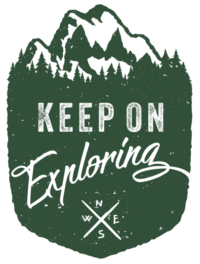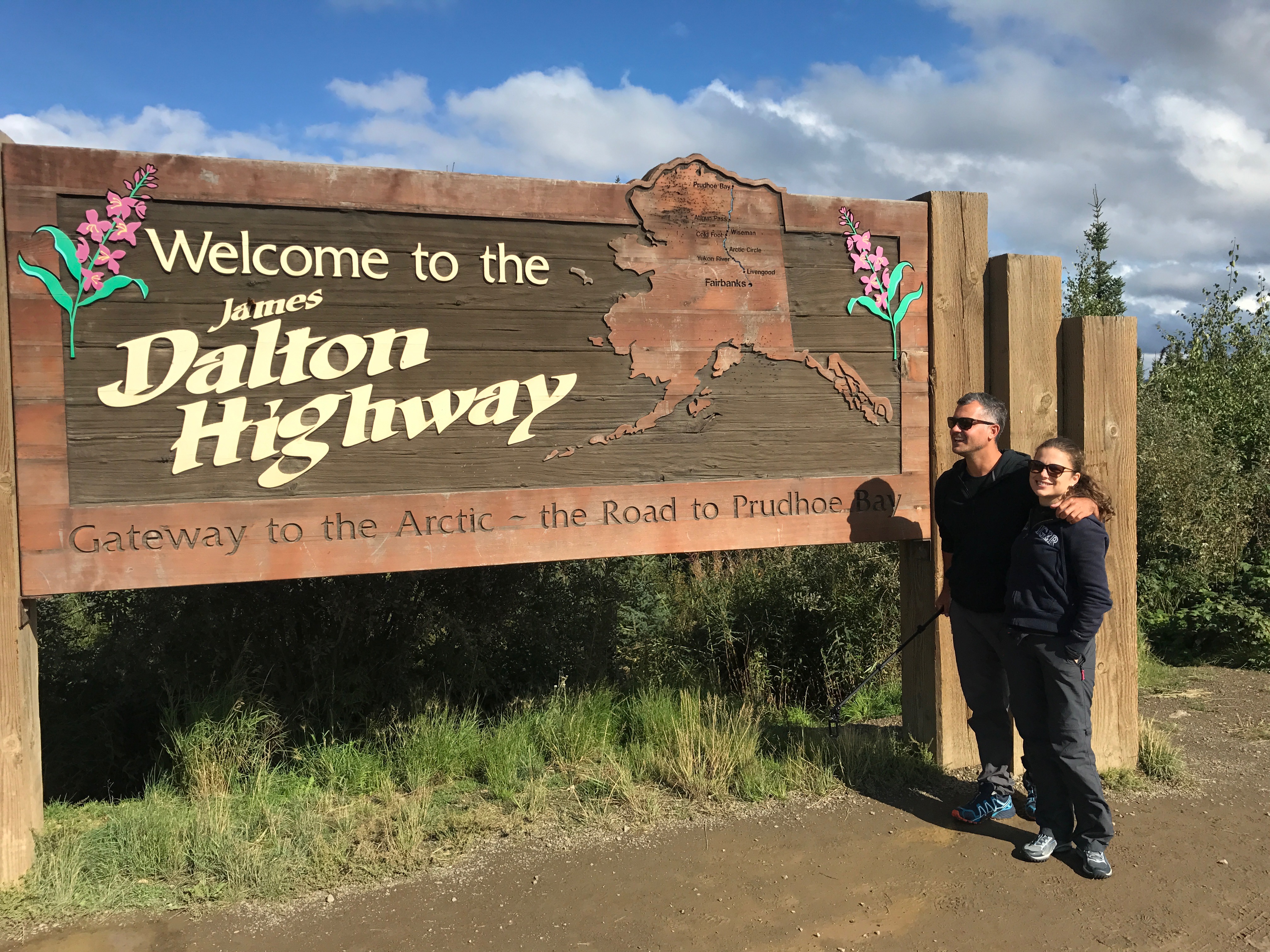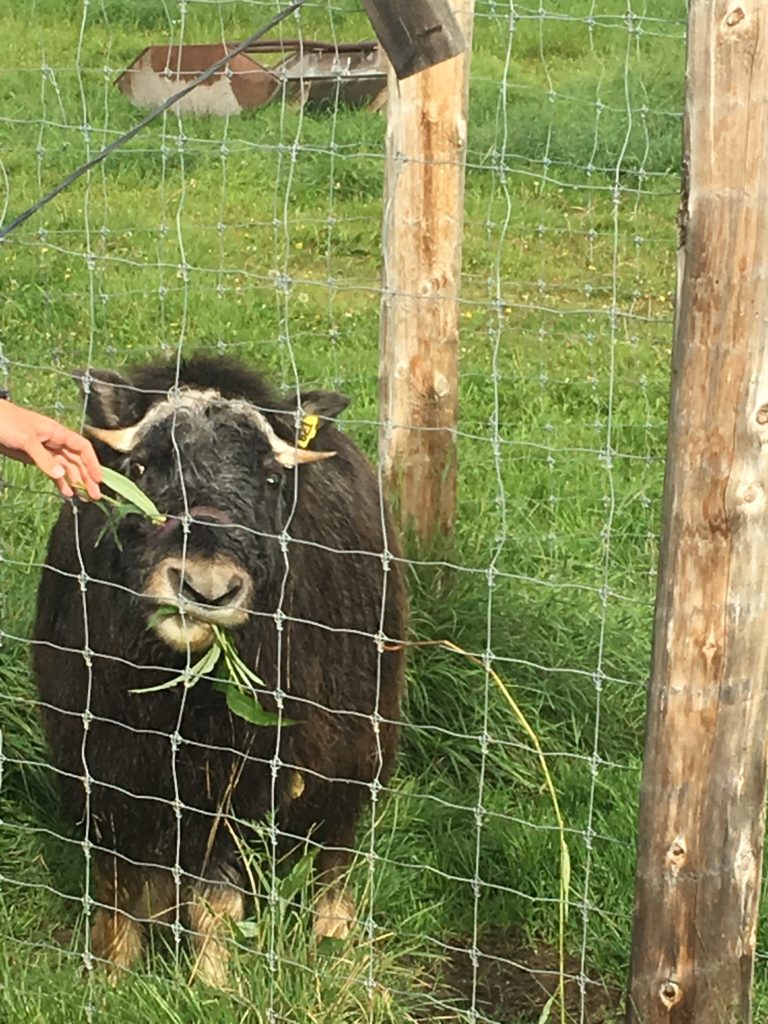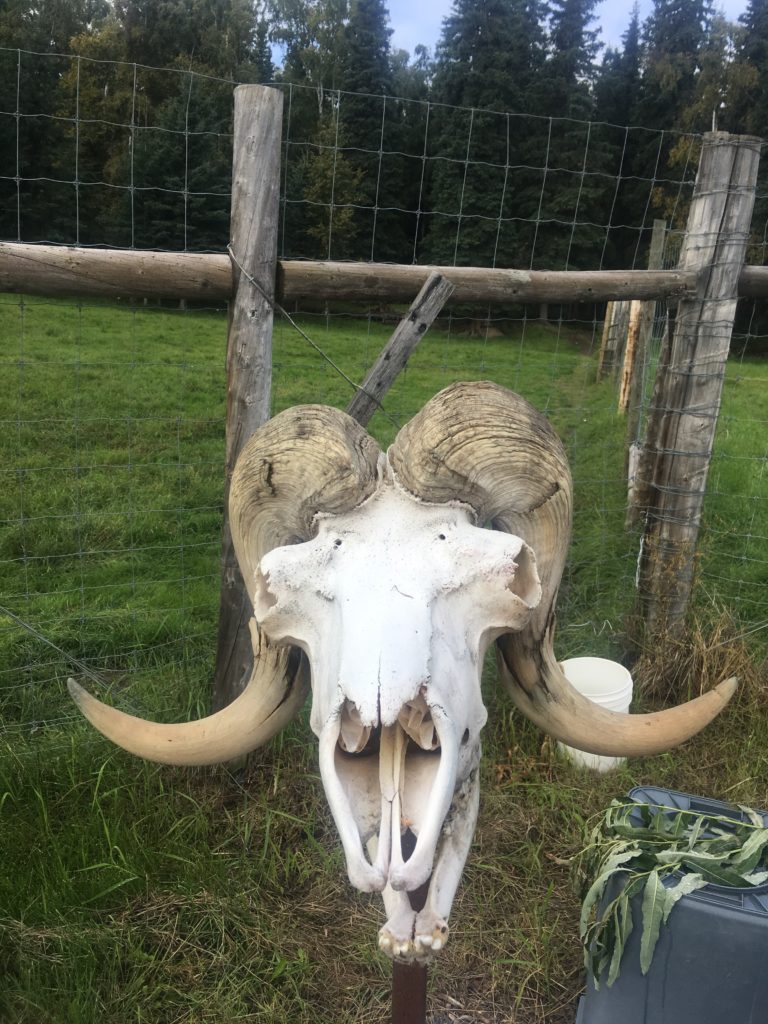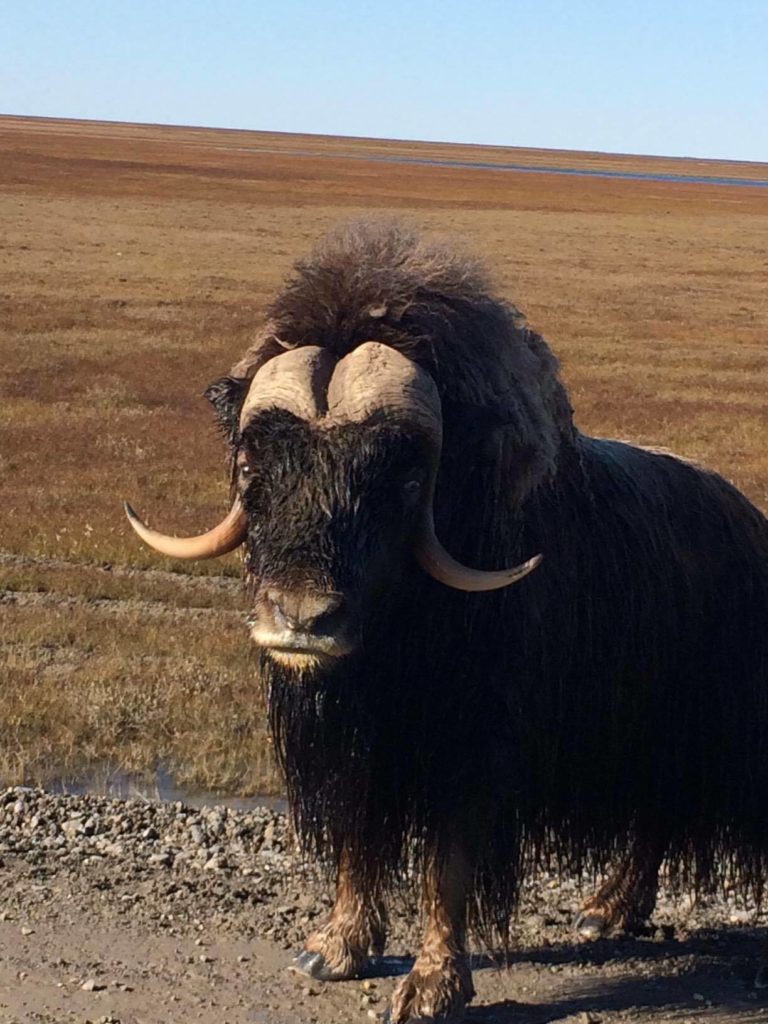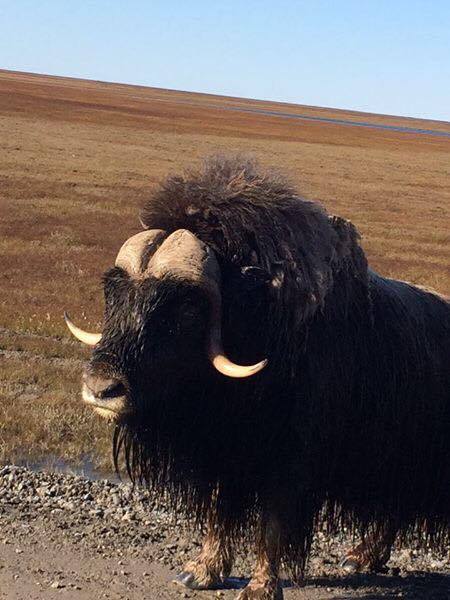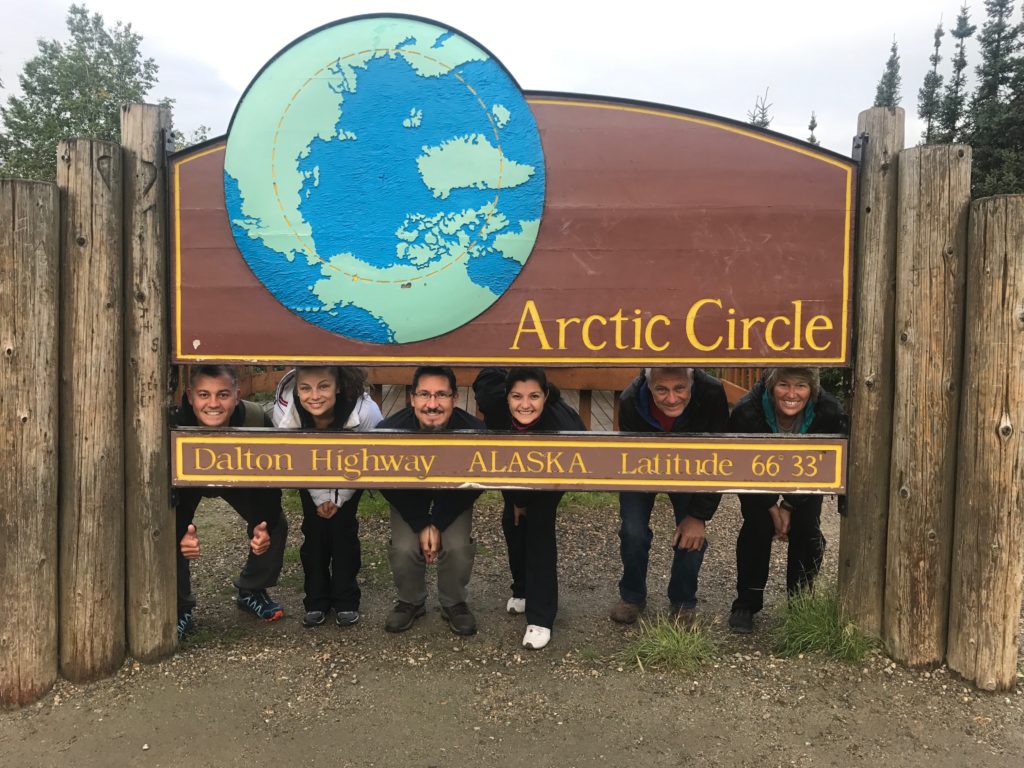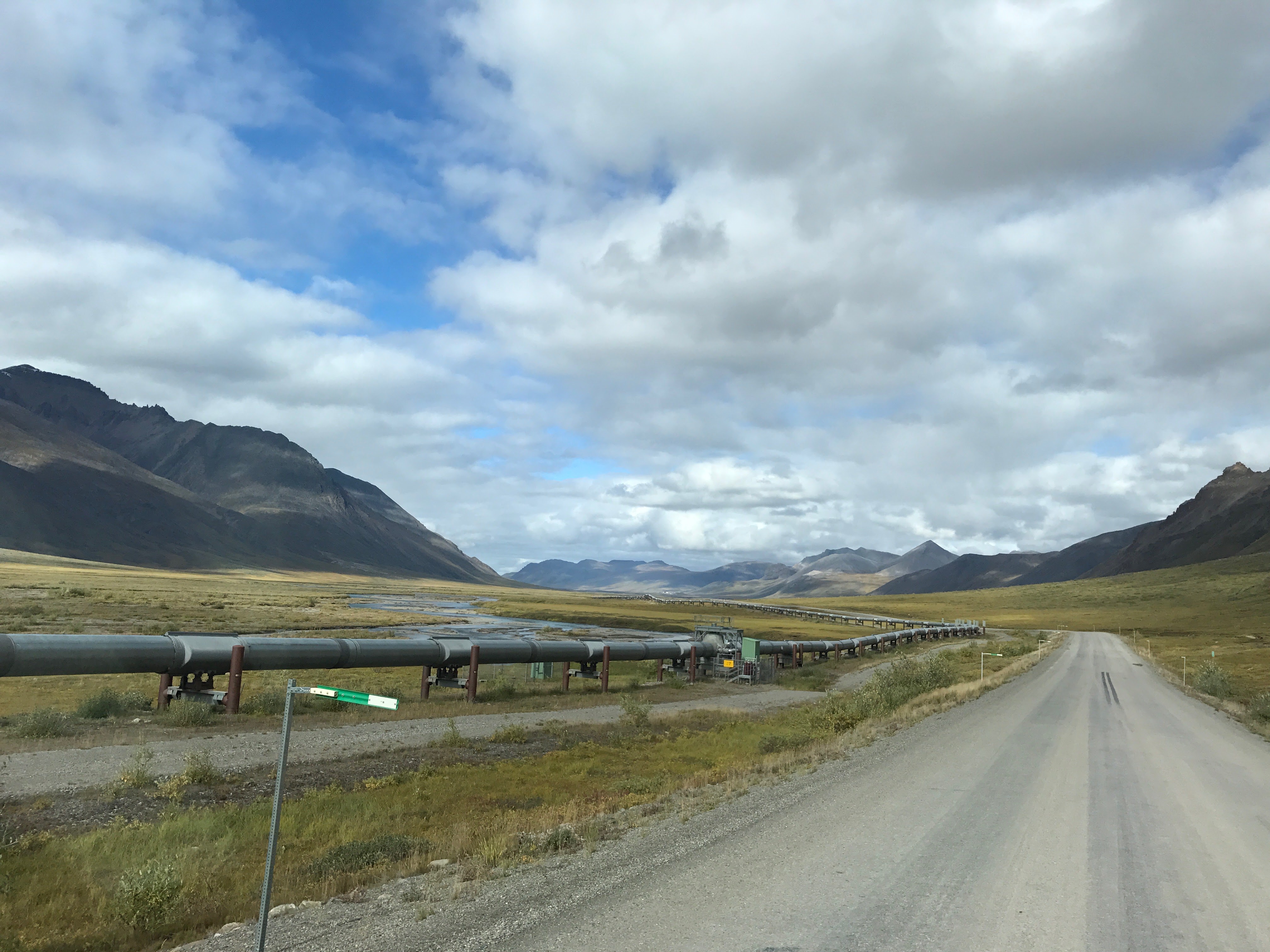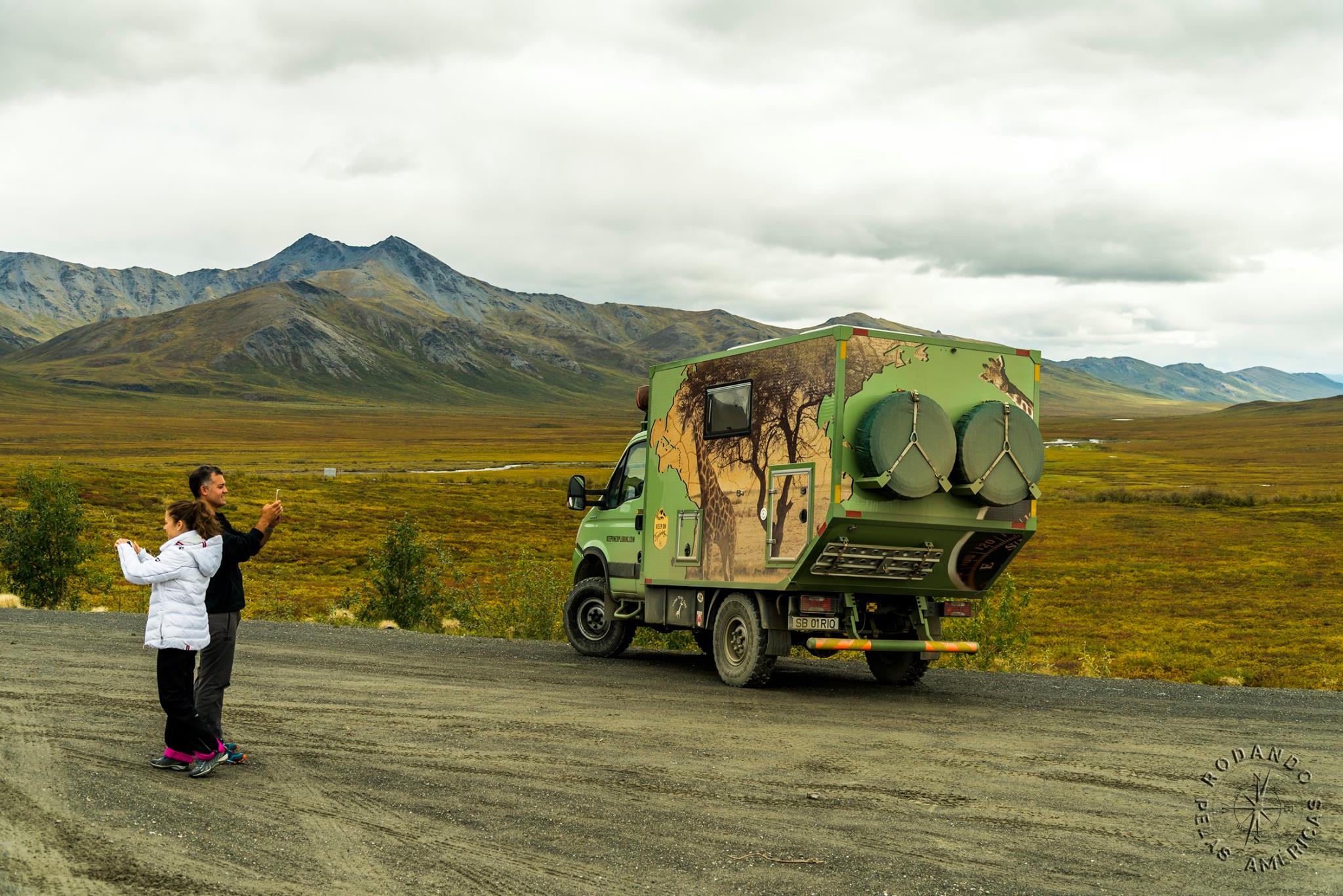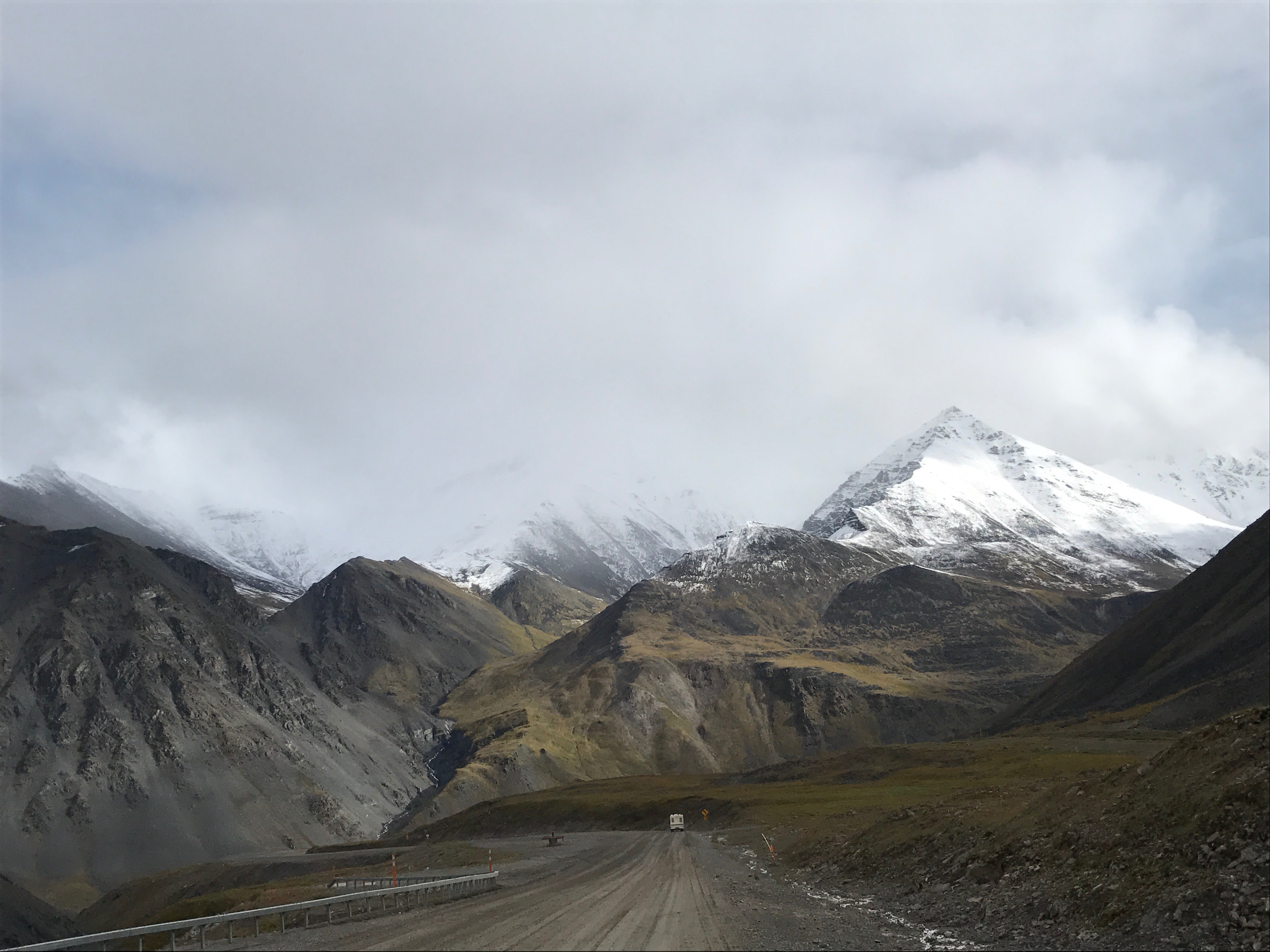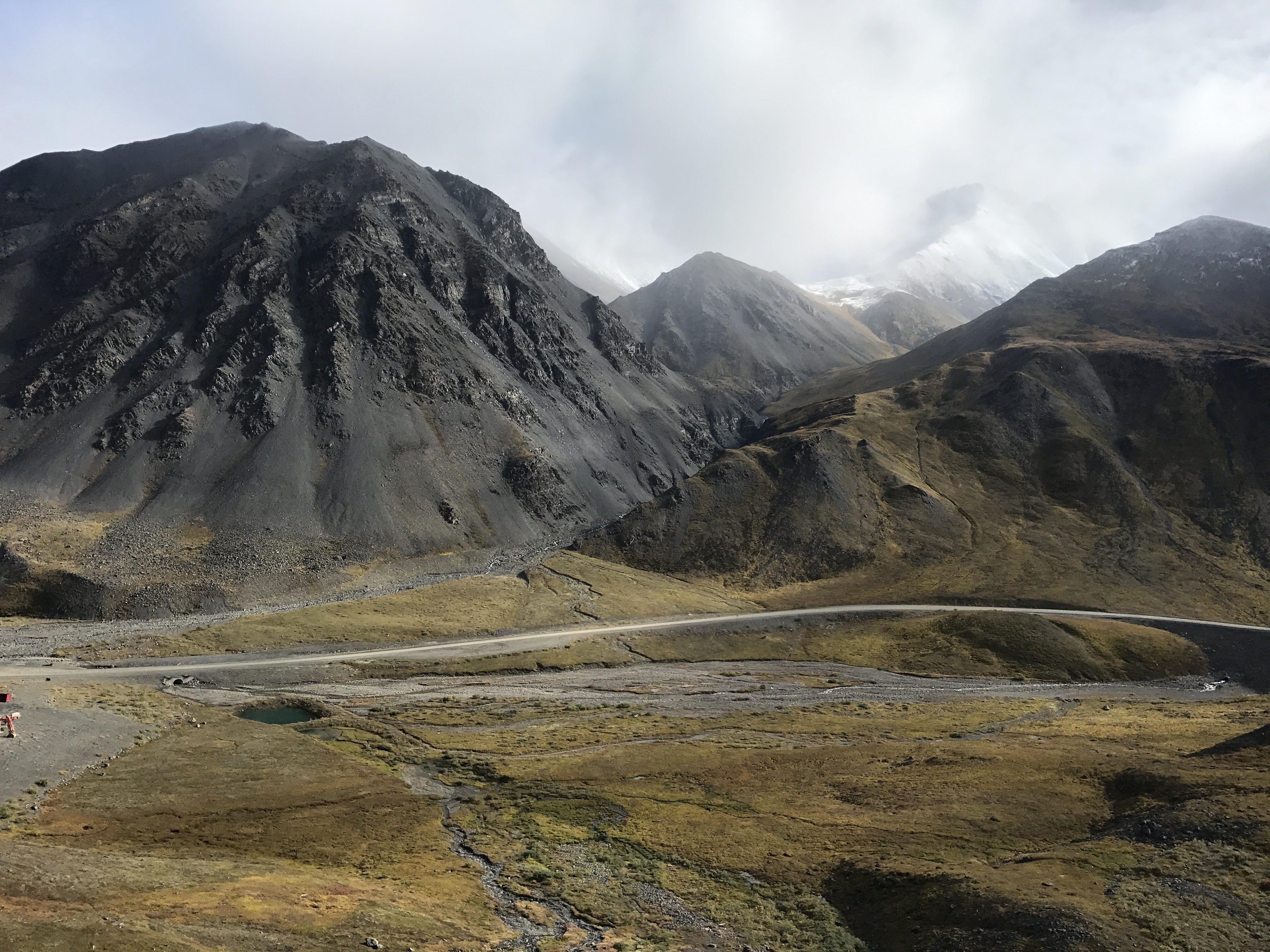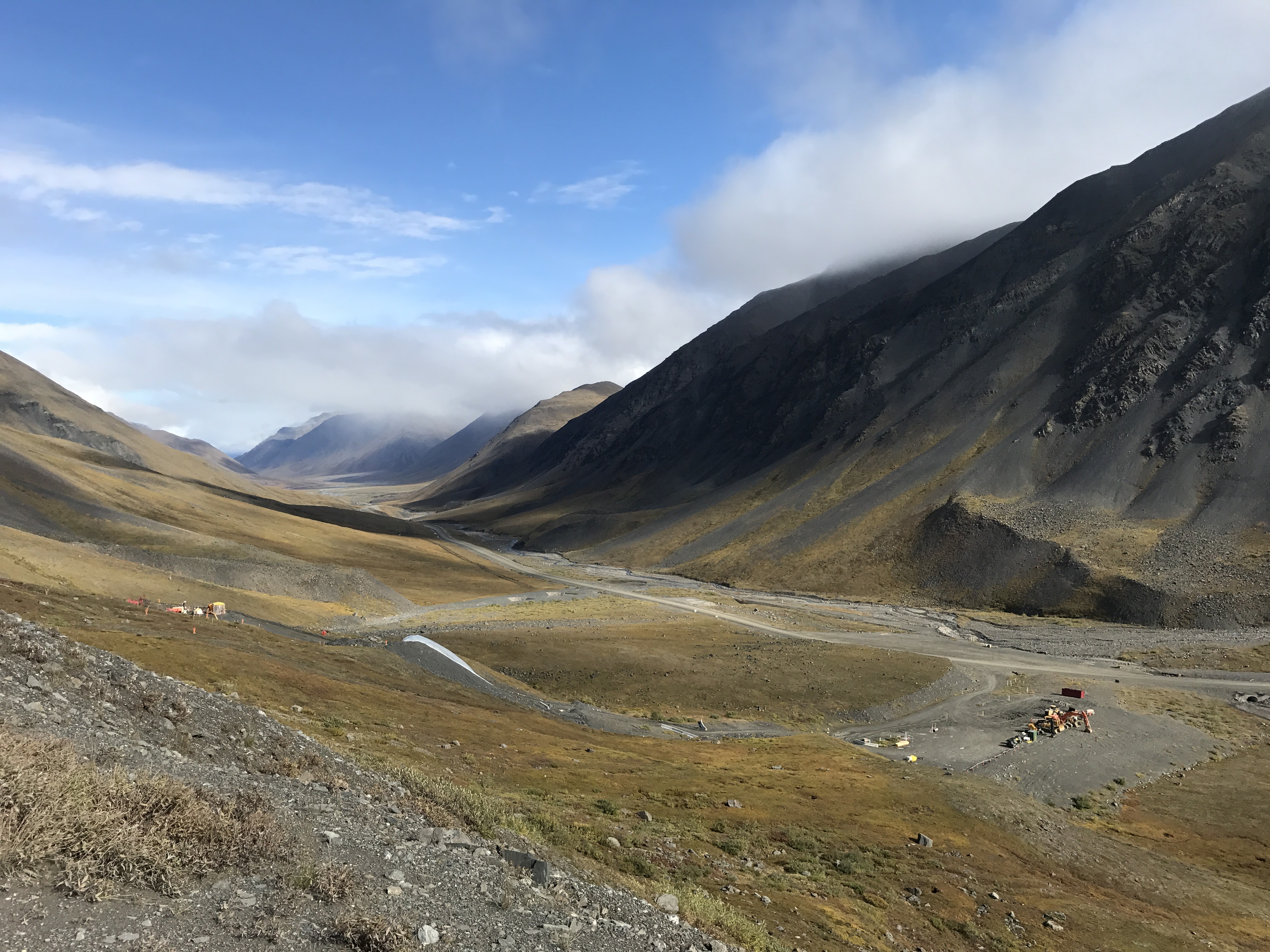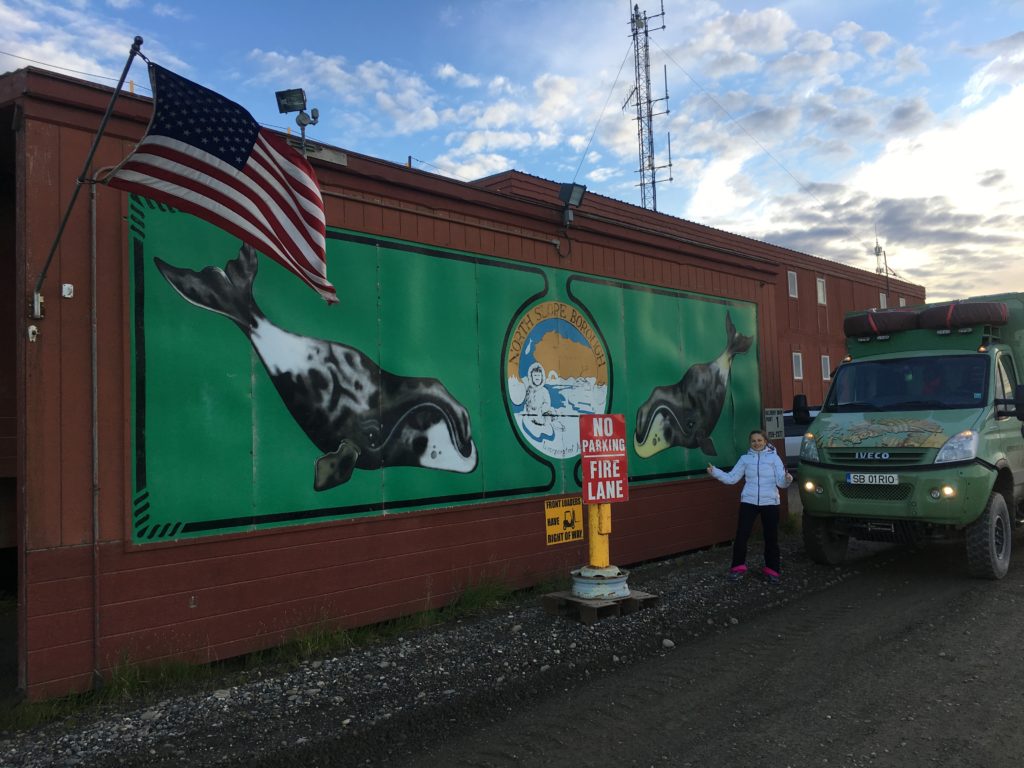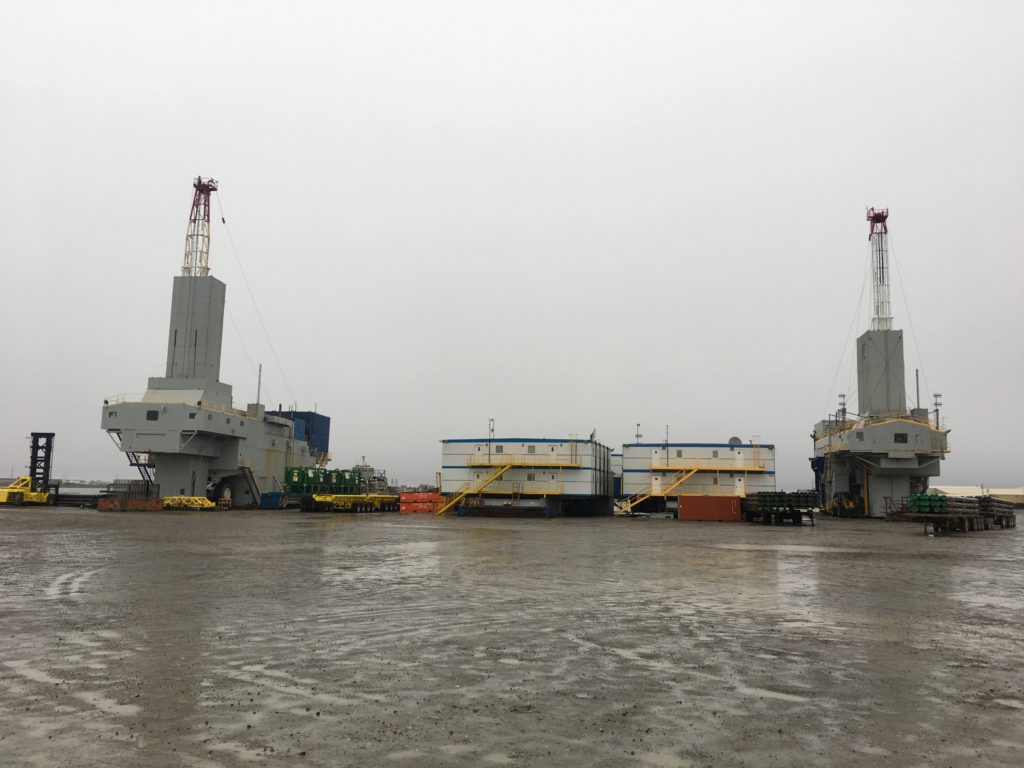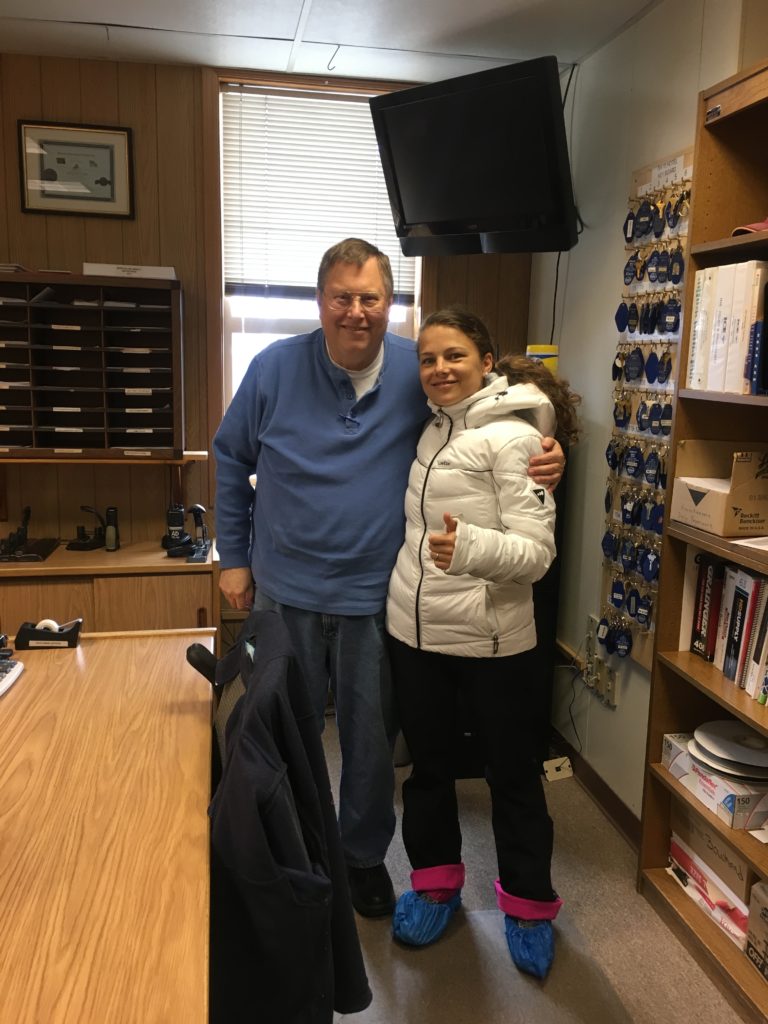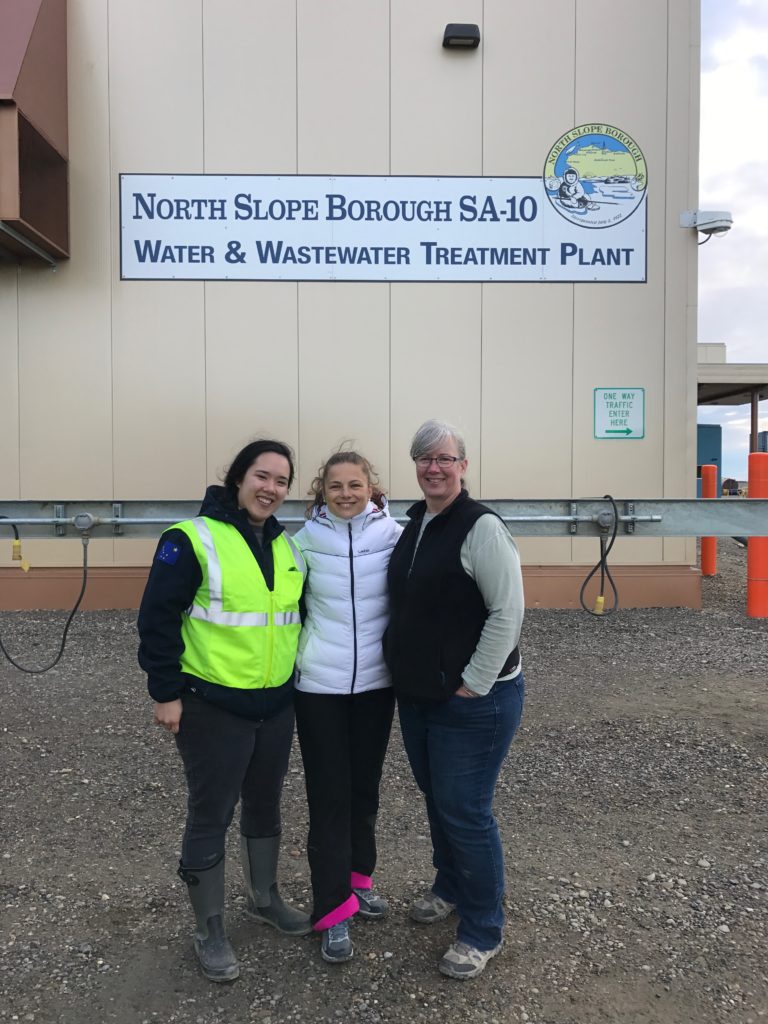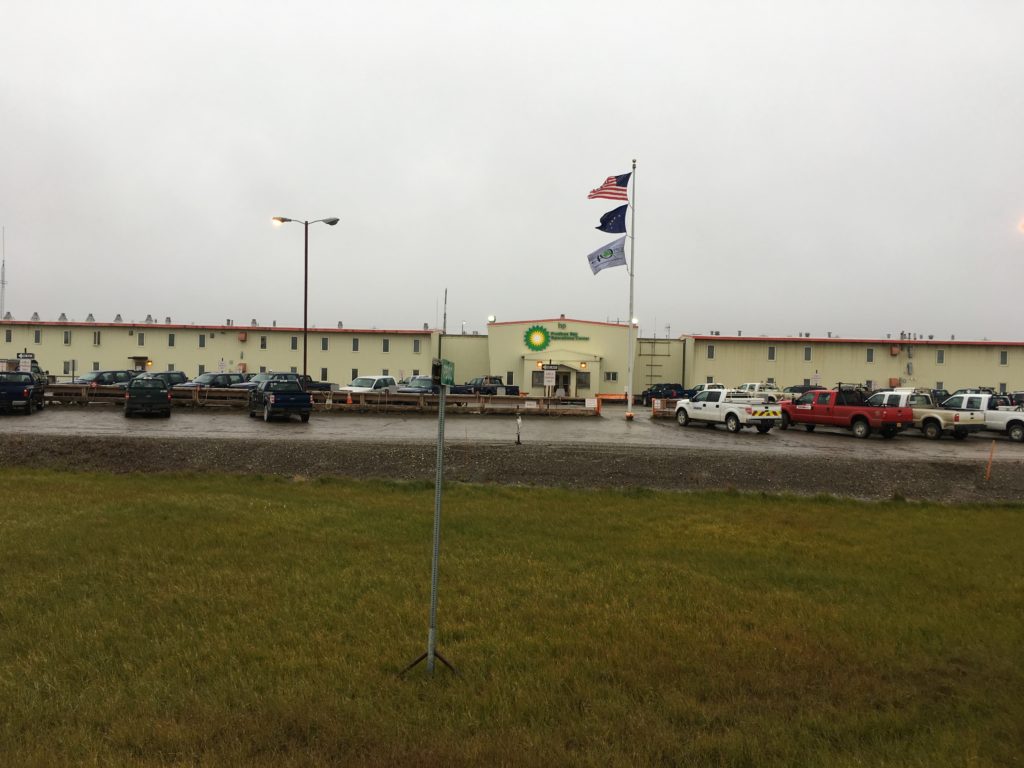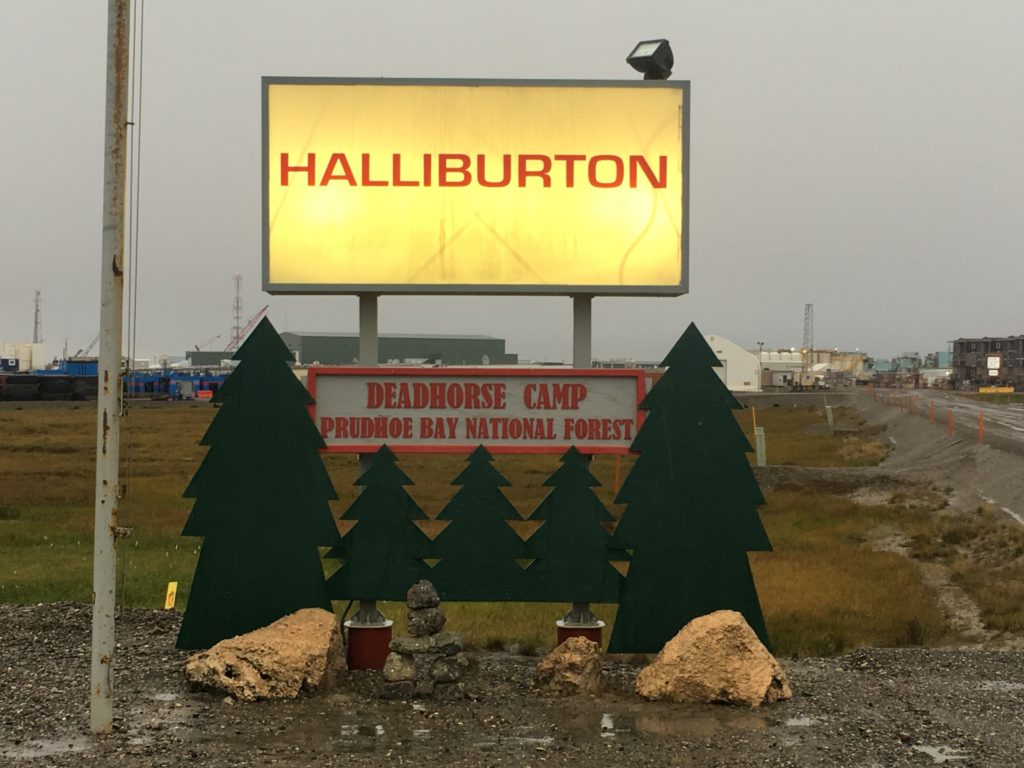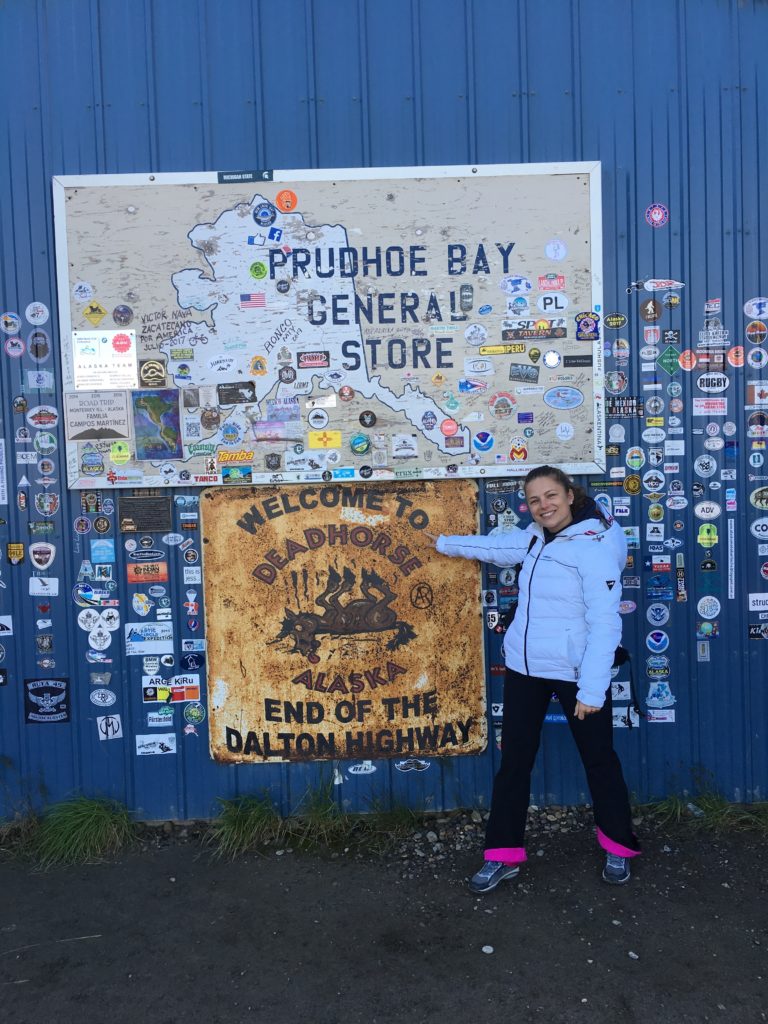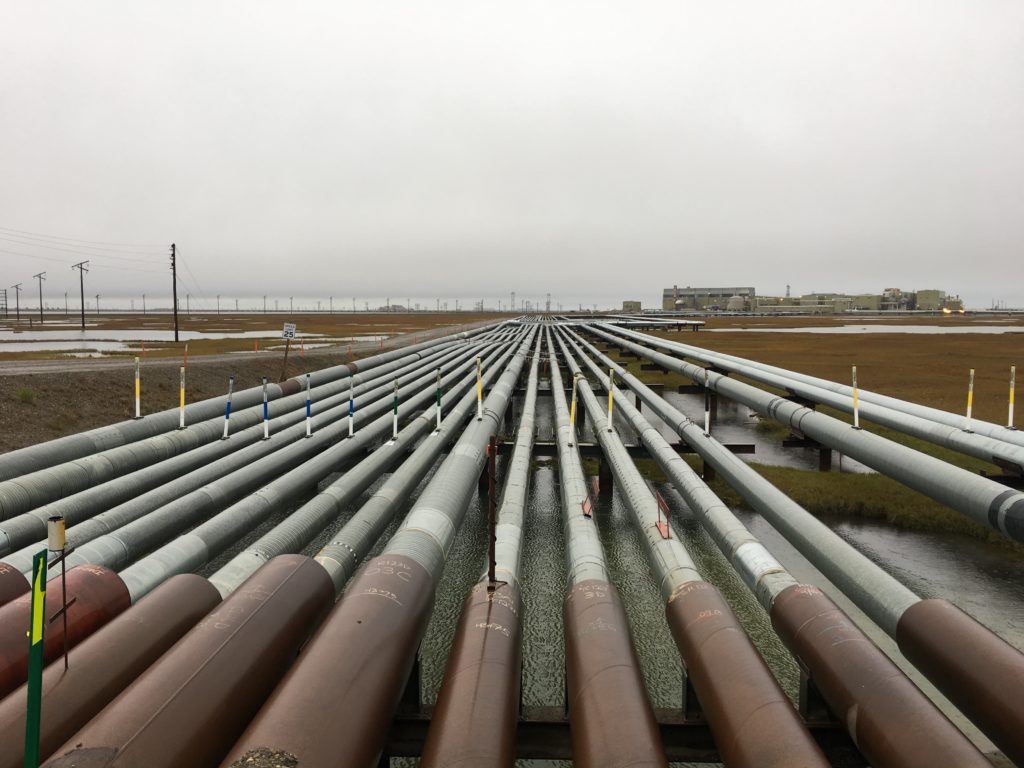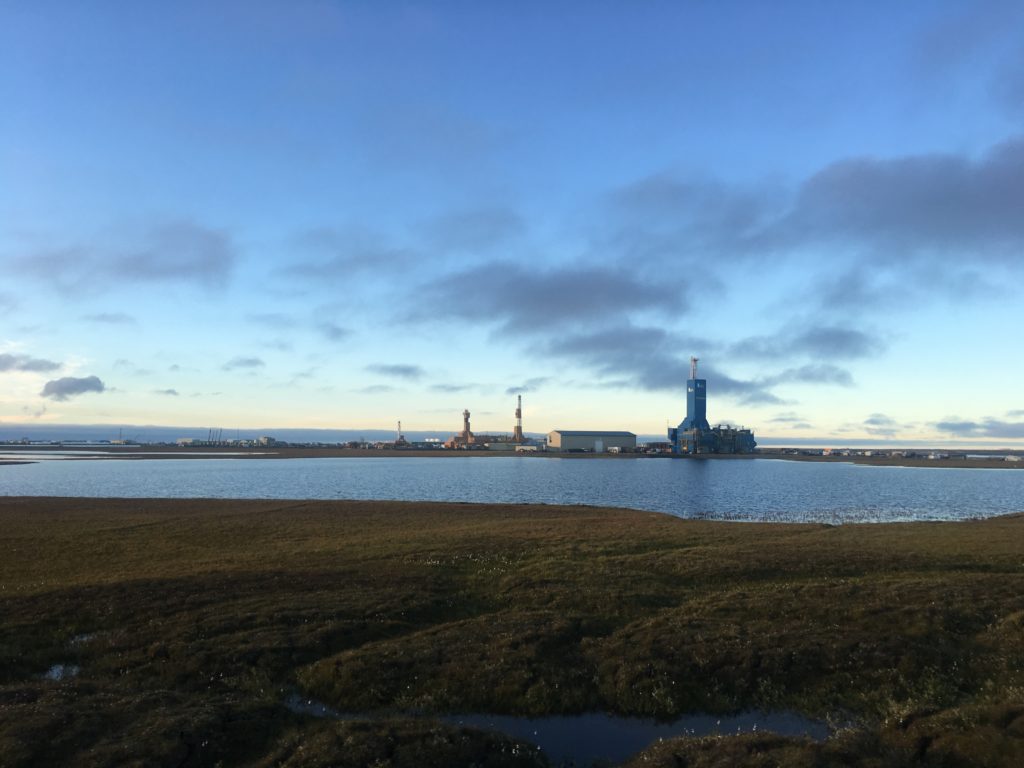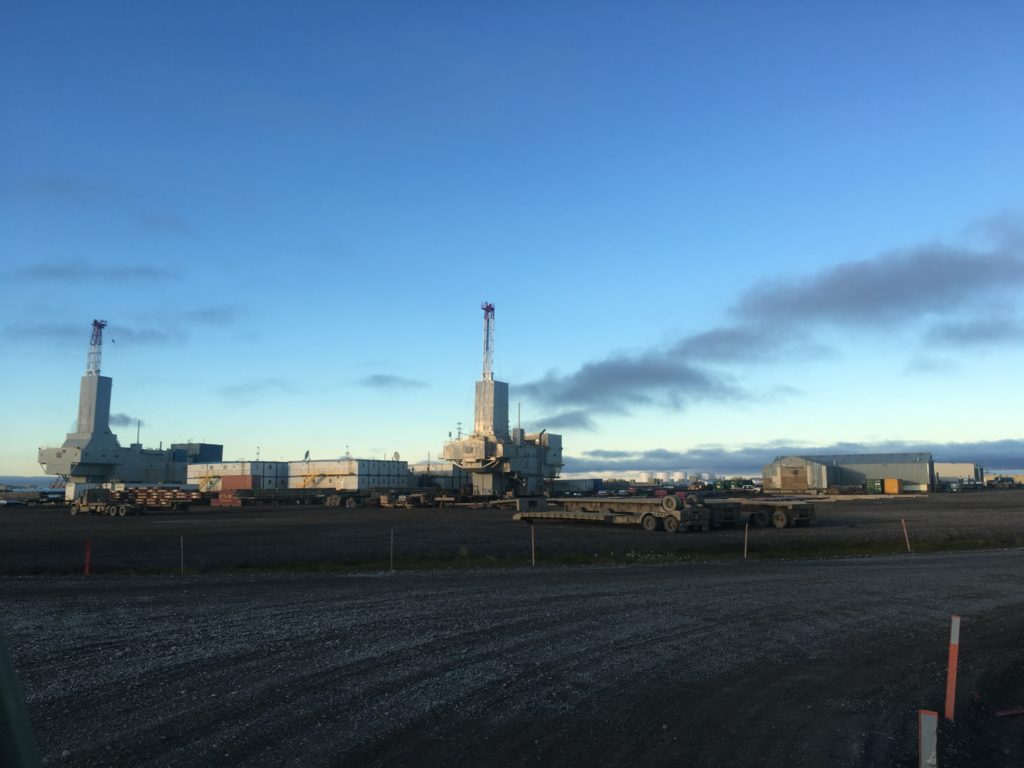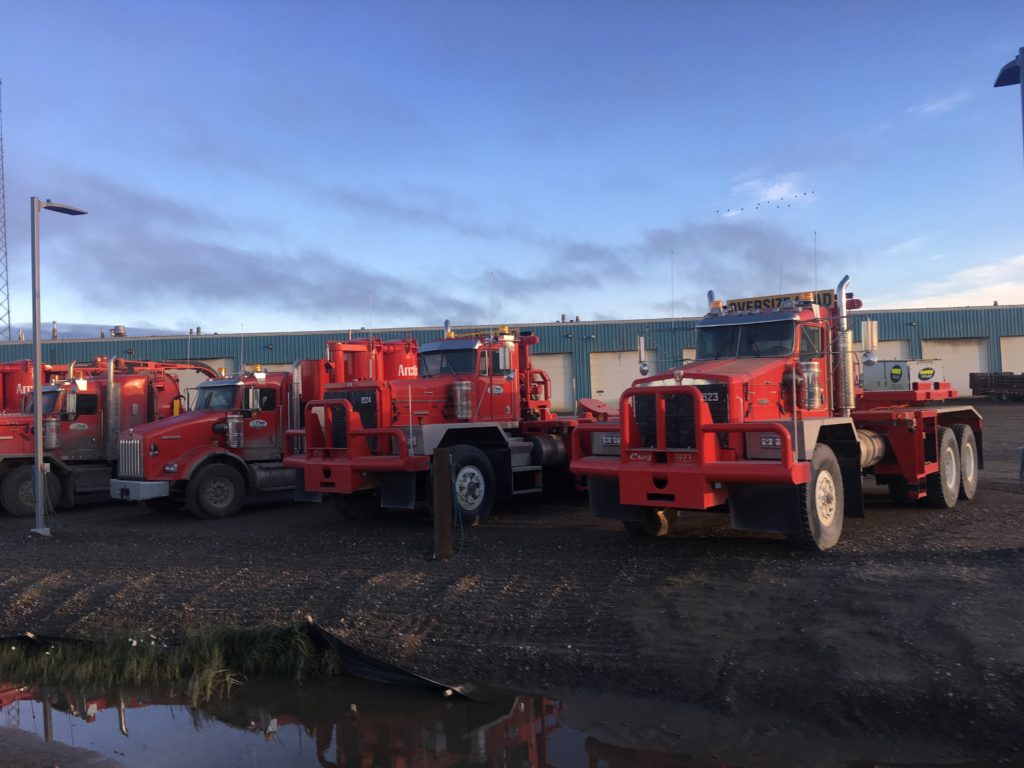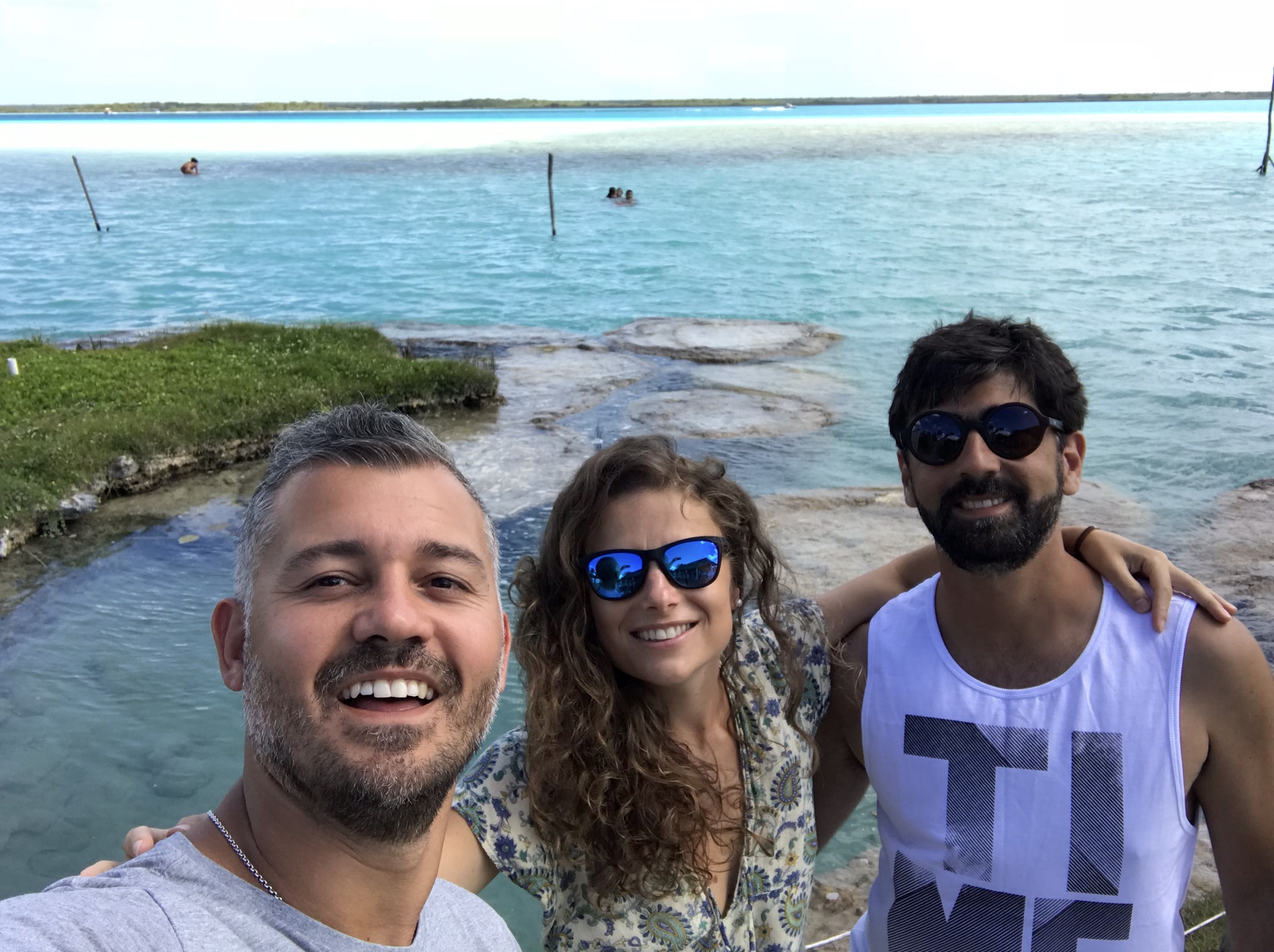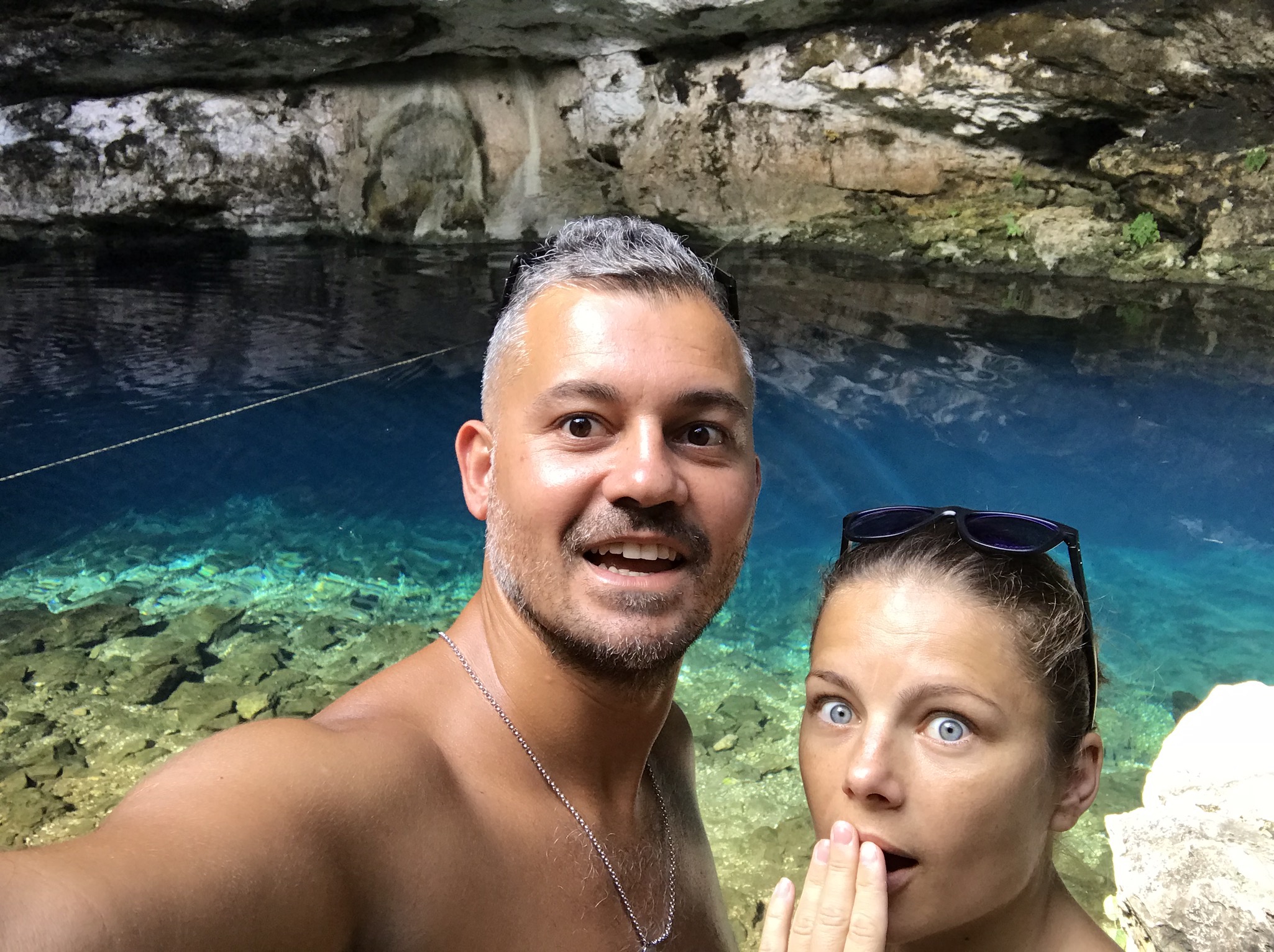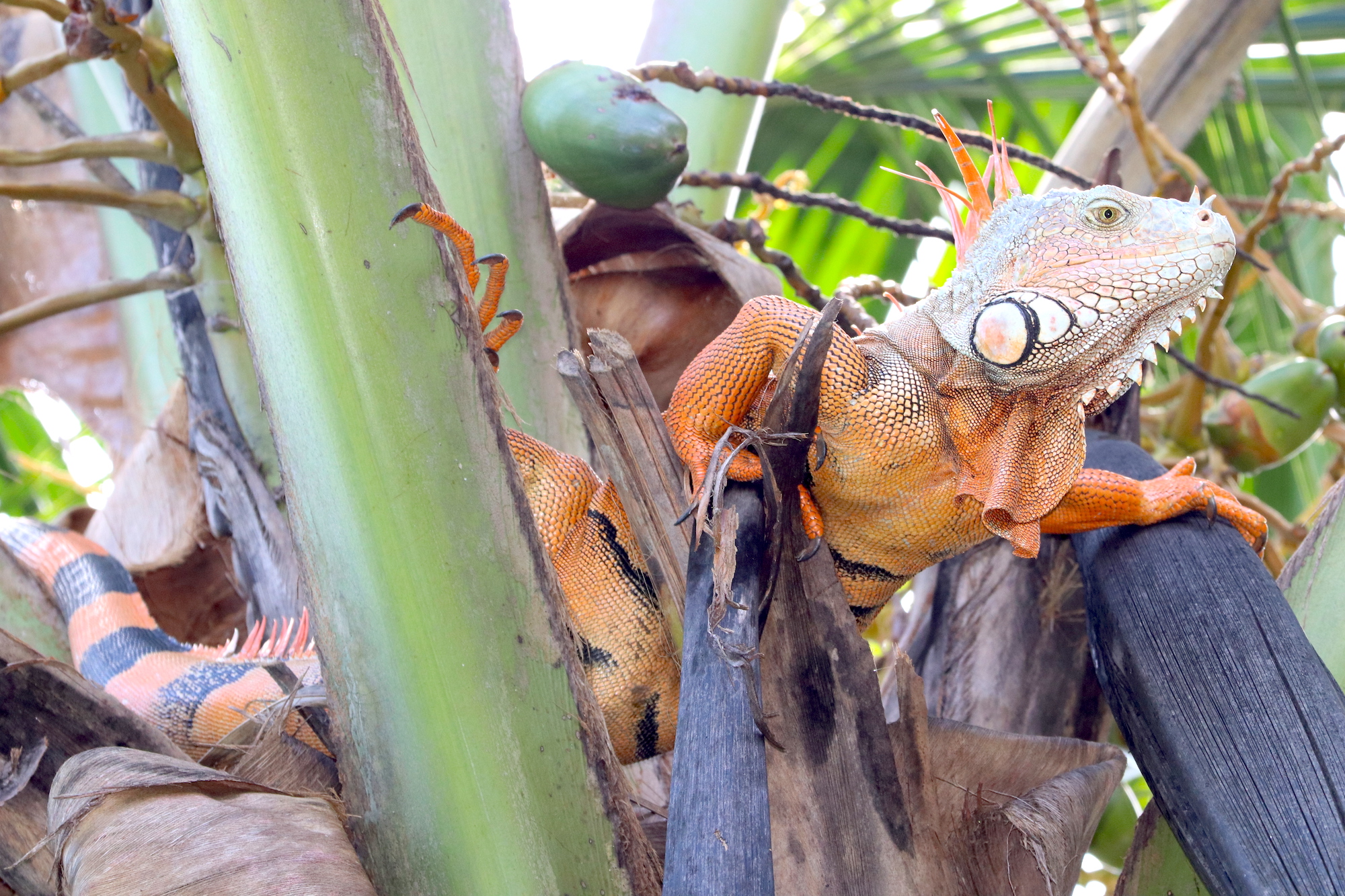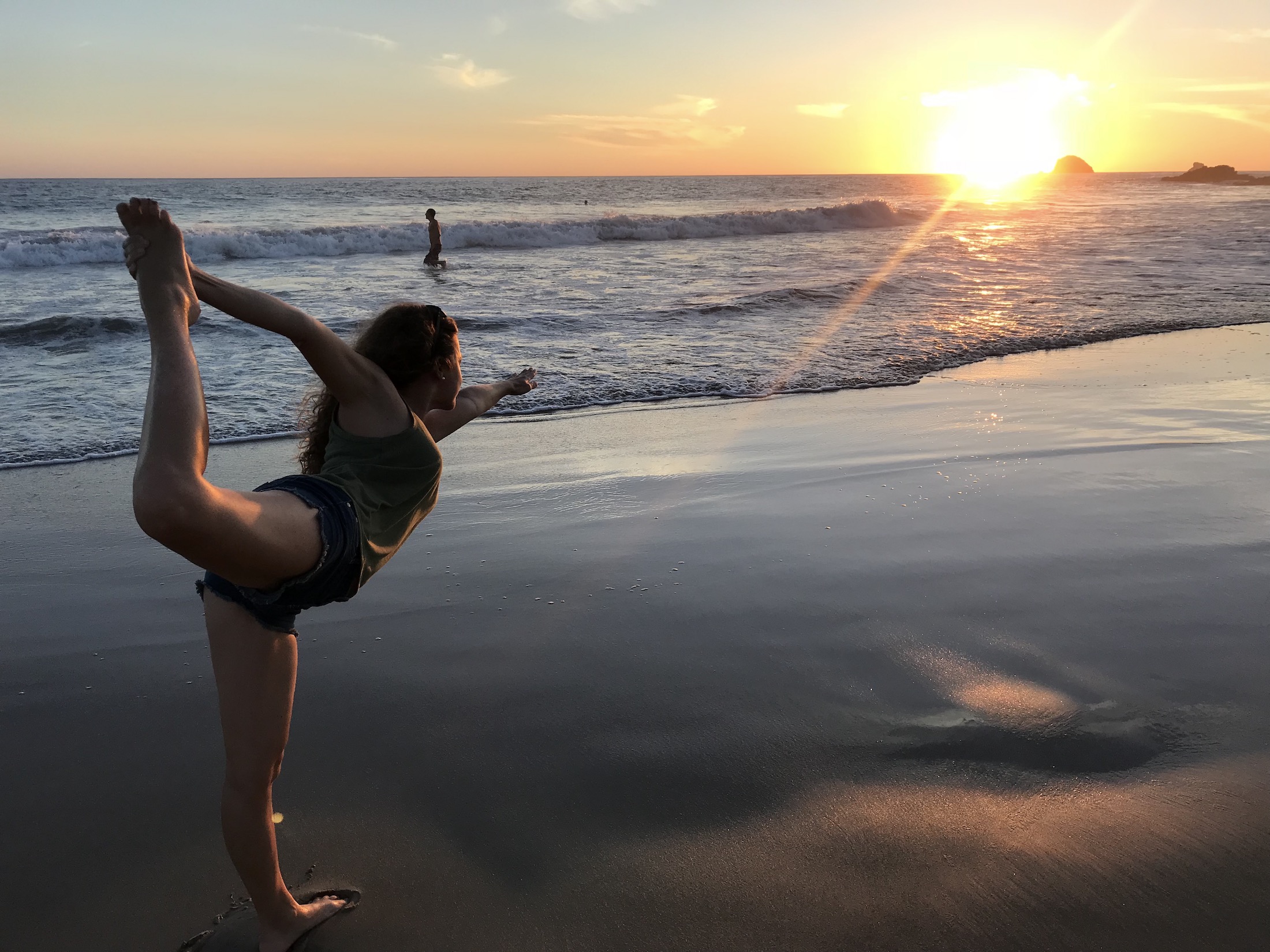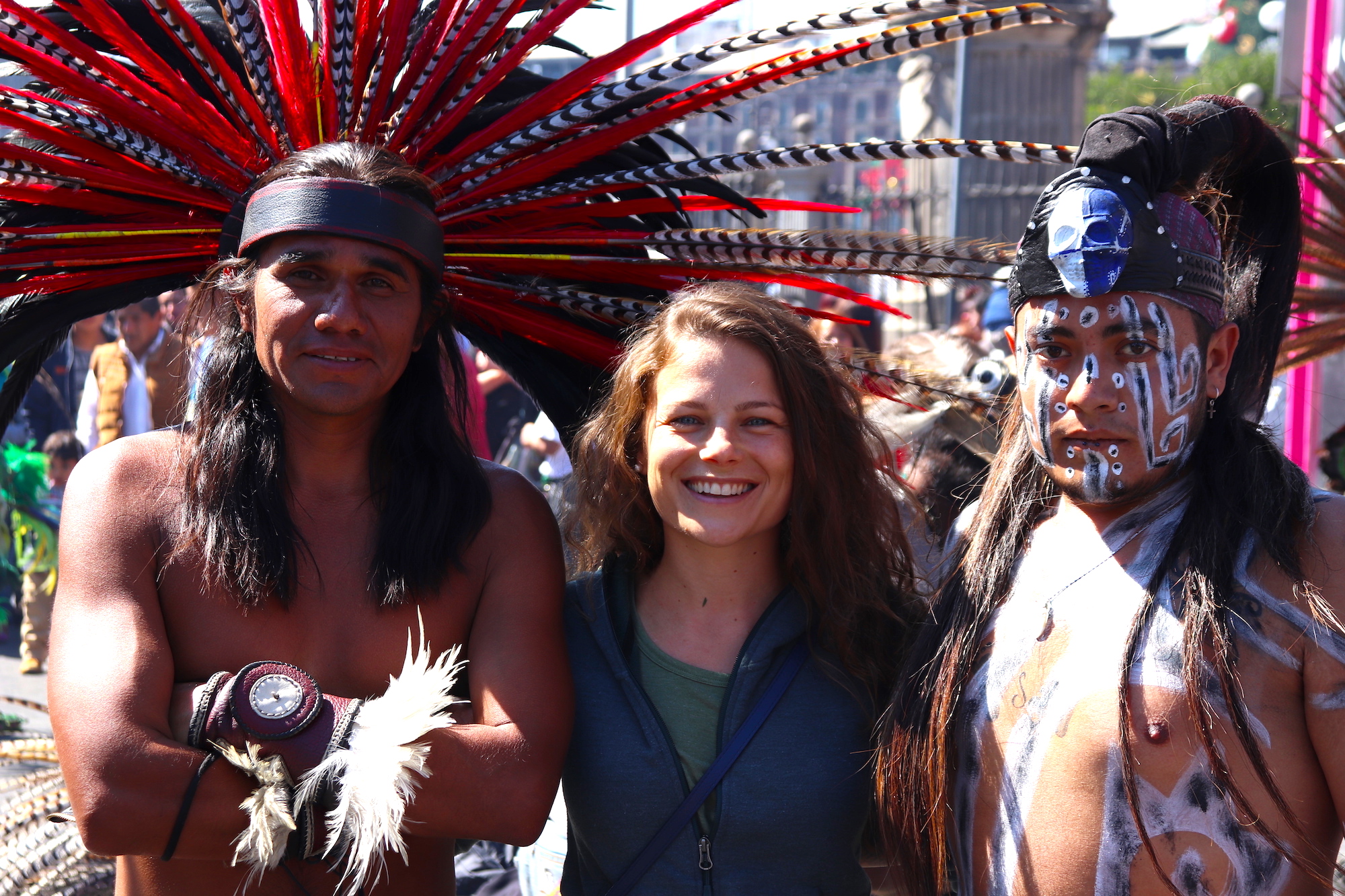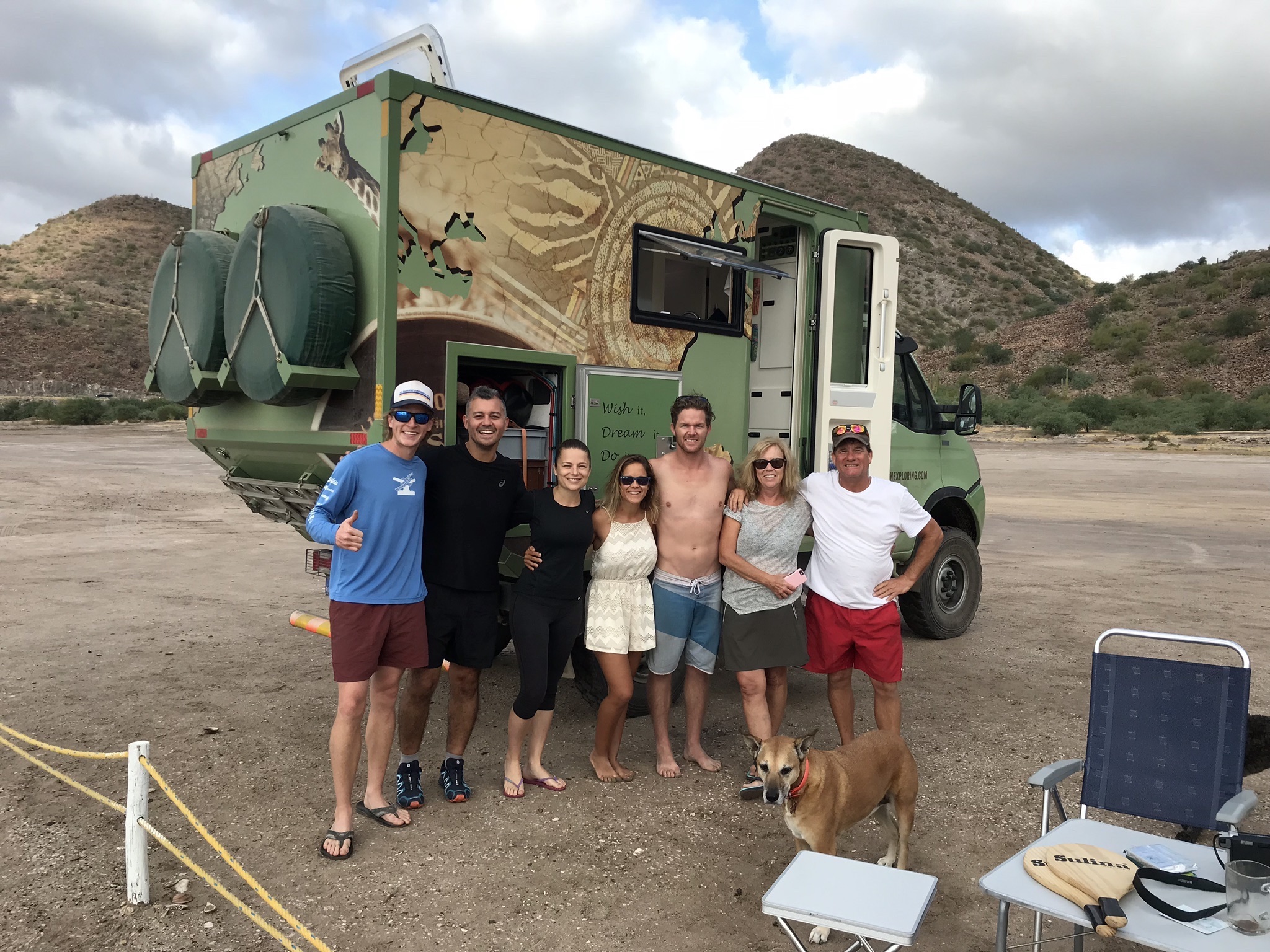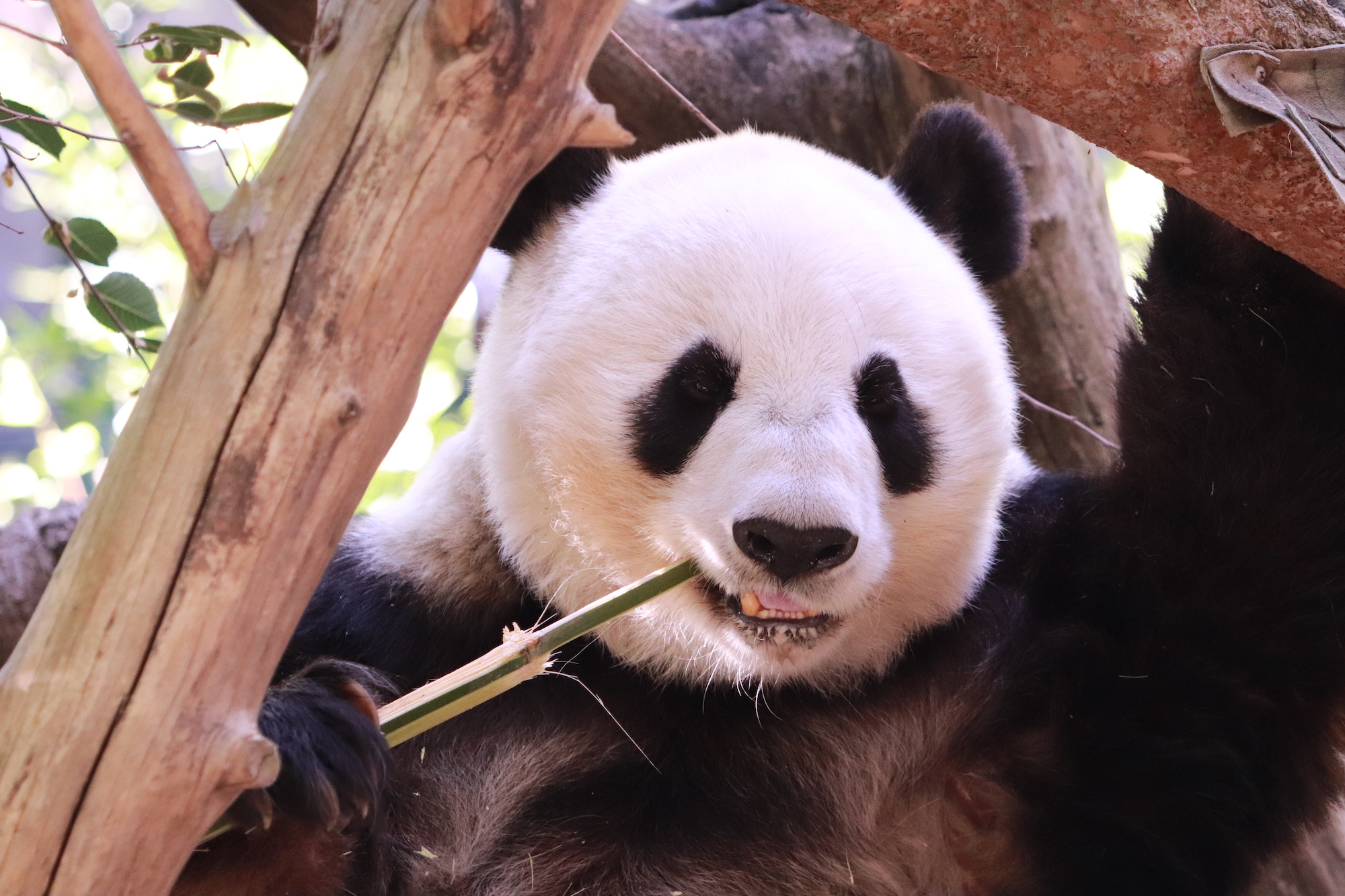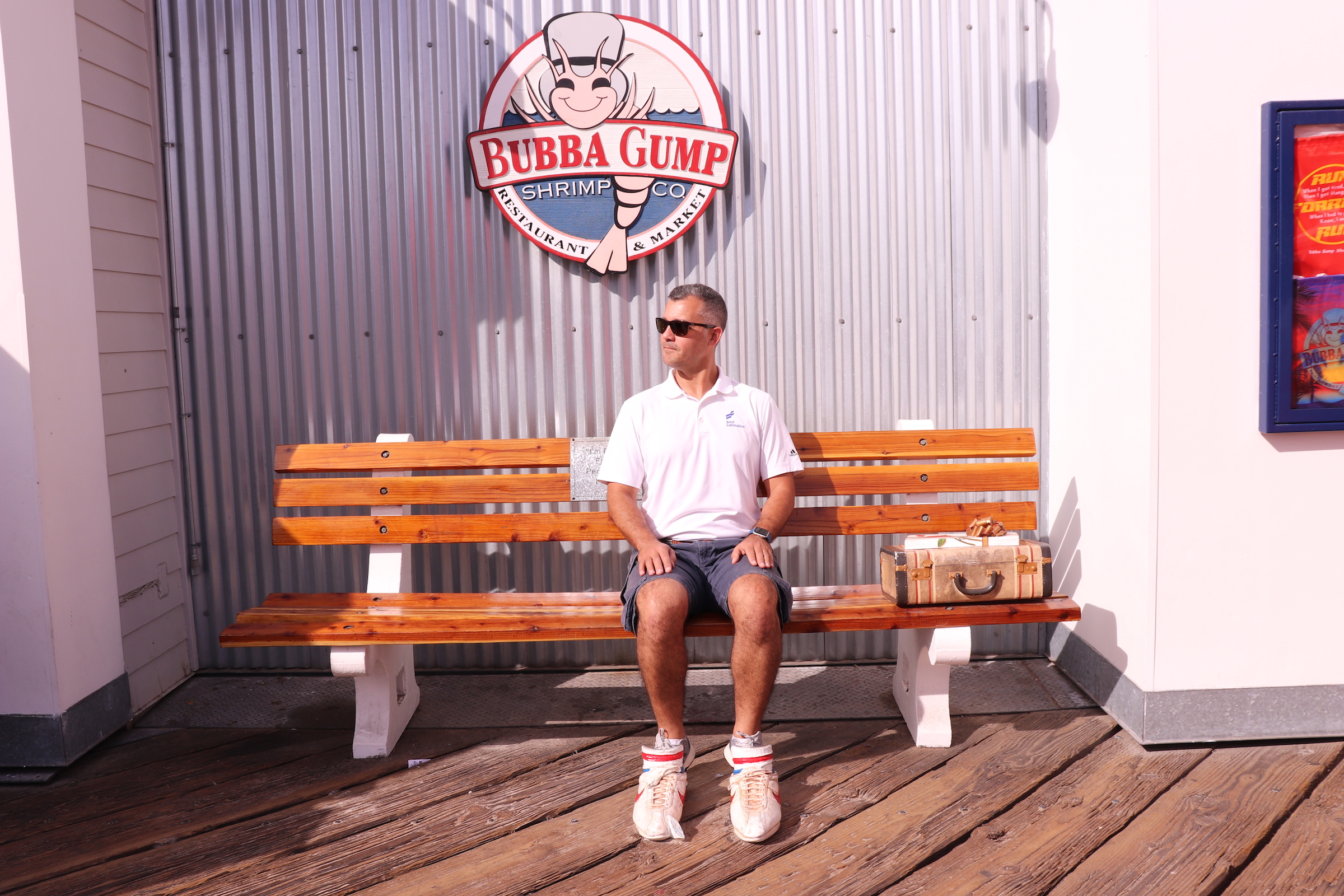Many people come to Alaska fascinated to encounter the breathtaking beauty of the nature, the majestic mountains, the grizzly bears, the glaciers and the abundant rivers that offer a large array of outdoor experiences from salmon fishing, caribou hunting, whale watching to hiking Mount Denali and watching the Northern Lights.
For many travelers overlanding Alaska up to the Arctic Ocean is where the Pan-American journey starts, the northerns point of the North American continent. A dream that my husband always had and for which we crossed the whole Canada from the east coast to its north west territories, driving over 15,000 km. After this marathon that took us over one month driving we were finally at the borders with Alaska and very excited we got here. We crossed the border via the Top of the World Highway in Yukon, which is opened only during summertime, three months of the year.
The American customs authorities were friendlier than we expected. It was a very pleasant conversation, they didn’t inspect our vehicle, nor did they ask us to throw away our food, drinks or bear spray. Instead the officer offered himself to take a picture of us in front of the northerners land border port in USA. That’s was cool and unexpected.
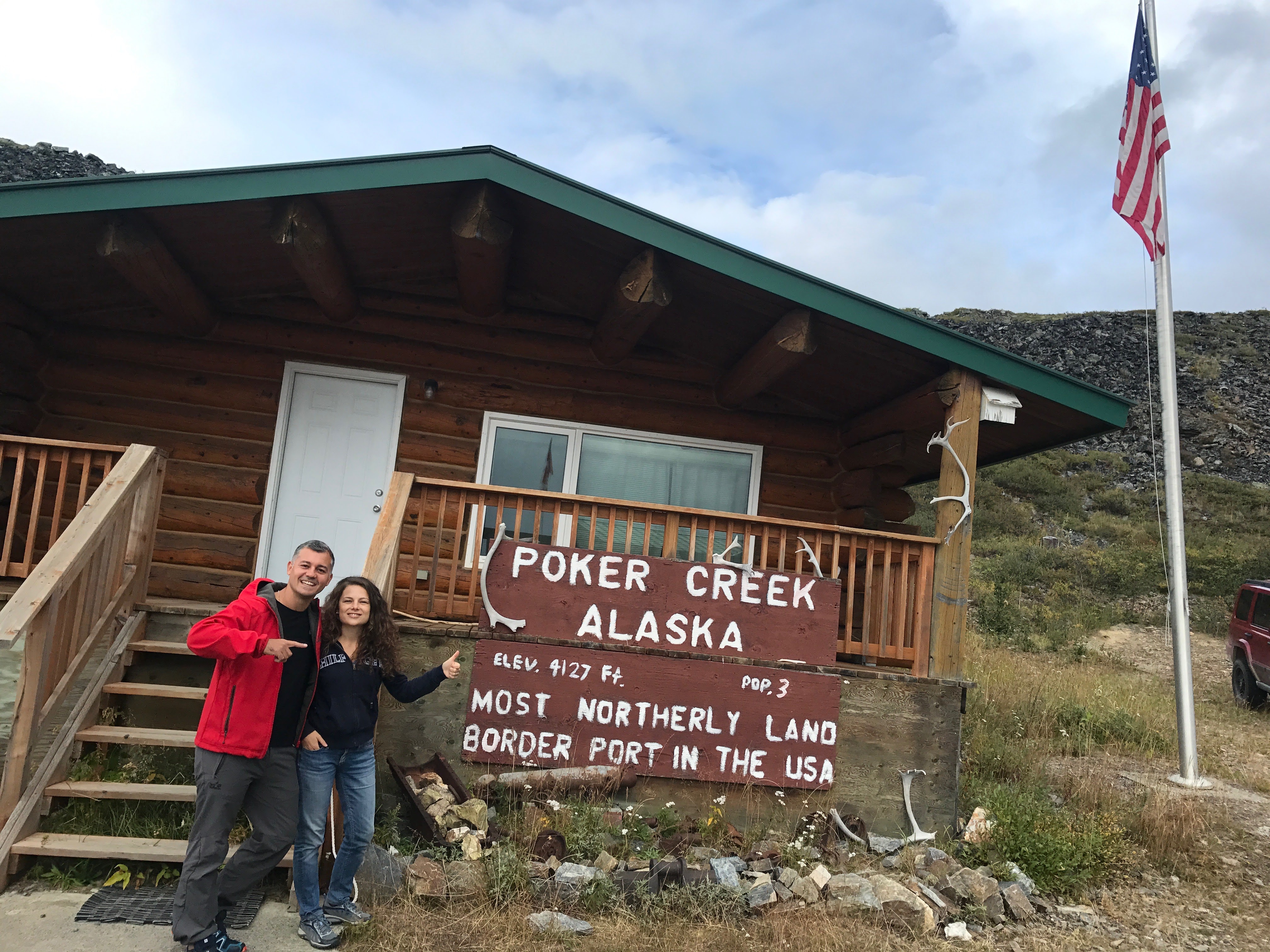
We were on a mission to reach the first leg of our trip in Alaska, Prudhoe Bay and the Arctic Ocean.
As we entered US, the road was paved for couple of miles, which was impressive to see, but then very soon it became gravel with plenty of potholes, even worst than on the Canadian part.
Not long after the borders we passed through the funny named community, Chicken. The little town has a chicken statue with direction signs showcasing other places in the world with related names to Chicken, such as: Two Eggs, Suck Egg Hollow, Roosterberg Belgium, etc :-))
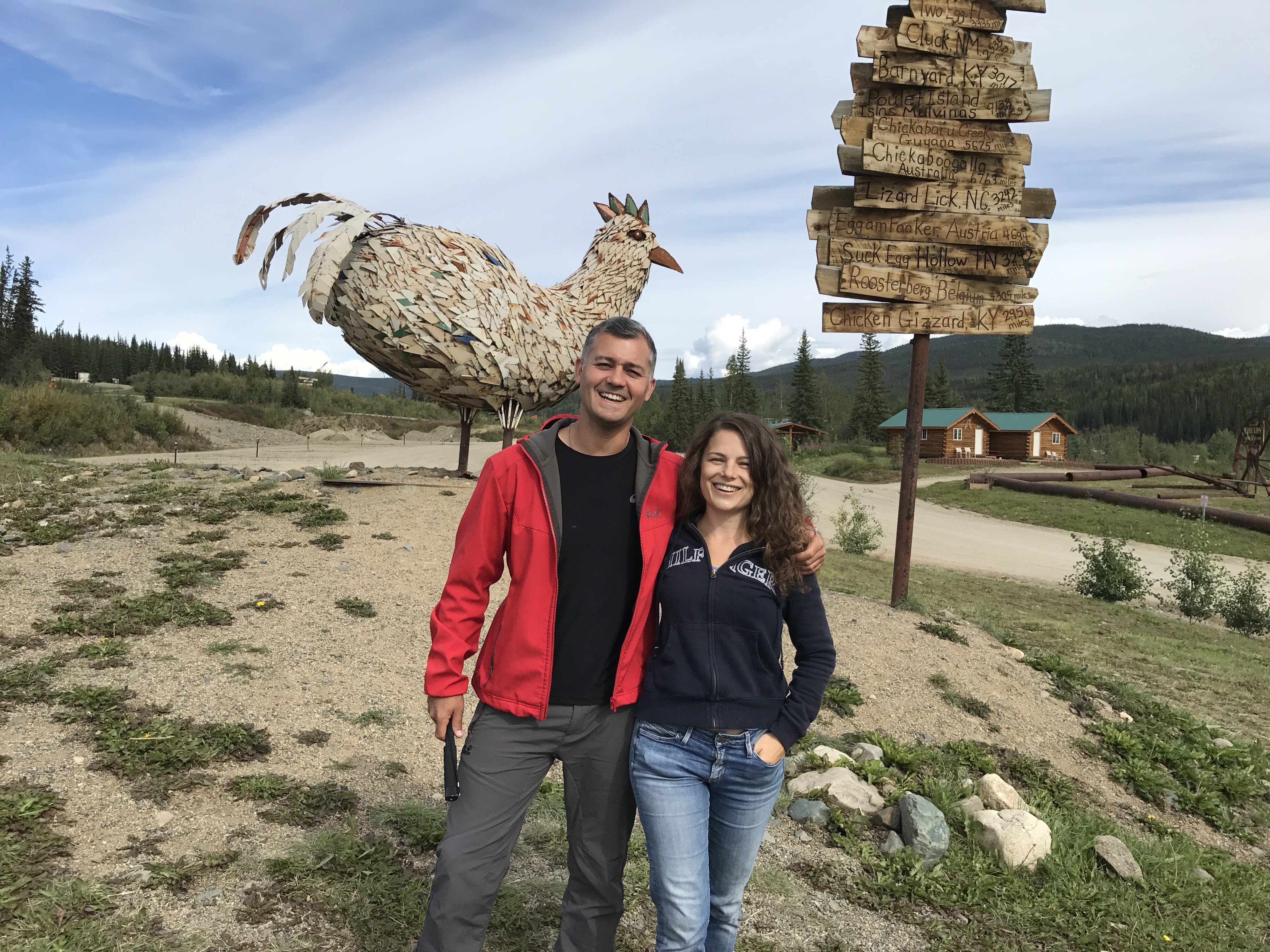
We continued the road towards Tok and while we had to stop due to road construction we were exposed to the first cultural experience.
An Alaskan cowboy gets out of the car to talk with the road assistance officer. Out of the blue he shows off his riffle. We understood immediately we are in the country of “any man can have a gun”. At the next gas station, the gun shop was just next to the convenience store. At the end of the day this is a convenient tool to have in the middle of the wild in Alaska.
It seemed to be a much more daring atmosphere, people seemed bolder and more assertive, but with a similar friendly attitude as the Canadians. The way they drove on this first part of the road, not only unveiled they are rushing more, but as well some sort of aggressiveness in traffic compared with the Canadians.
As we were slowing down on a bridge to admire a beautiful valley and river, the same guy that showcased his riffle an hour ago overtook us exhibiting insistently his middle finger out of the window. He must have meant we were welcomed in Alaska :))) Jokes aside, we understood we are in the wild wild west of the XXIth century and we needed to be careful.
We continued driving almost 200km to reach Fairbanks, a town in the middle of Alaska with a population of 31,000 people. This was the departure place to Prudhoe Bay on the Dalton Highway. The road to Fairbanks was beautiful, fresh, surrounded by nature. On our way we saw a mama moose with her baby on the side road. We got the chance to make a small video as they were not too scared seeing us. We were happy to have such an experience, it was the first time we saw moose.
In Fairbanks we joined other travelers that were heading to Prudhoe Bay, a Brazilian couple, Toninho and Jane that are on the road for the past three years. We also met Lyn and Kurt again, our Australian friends which we met in Dawson City. We were a whole group of friends ready to conquer the Dalton Highway.
Dalton Highway is the only highway that can connect you to the northern point of Alaska and by which you can reach the Arctic Ocean over-landing 800km. In some parts it’s asphalted and fairy ok, but some others are covered with gravel and often full of potholes. The local authorities don’t guarantee any coverage in case of incidents. The road is often rugged and it changes its quality based on the weather. There is only one gas station mid way up in Coldfoot. I think one needs to have the right equipment, supplies and to be prepared psychologically for a total of 1600km return trip on a challenging terrain.
For such roads it’s recommended to travel in a group, in case things go wrong.
Out of the blue from a solitary life spent in the truck, we were in a social environment, had friends on the road and that felt good.
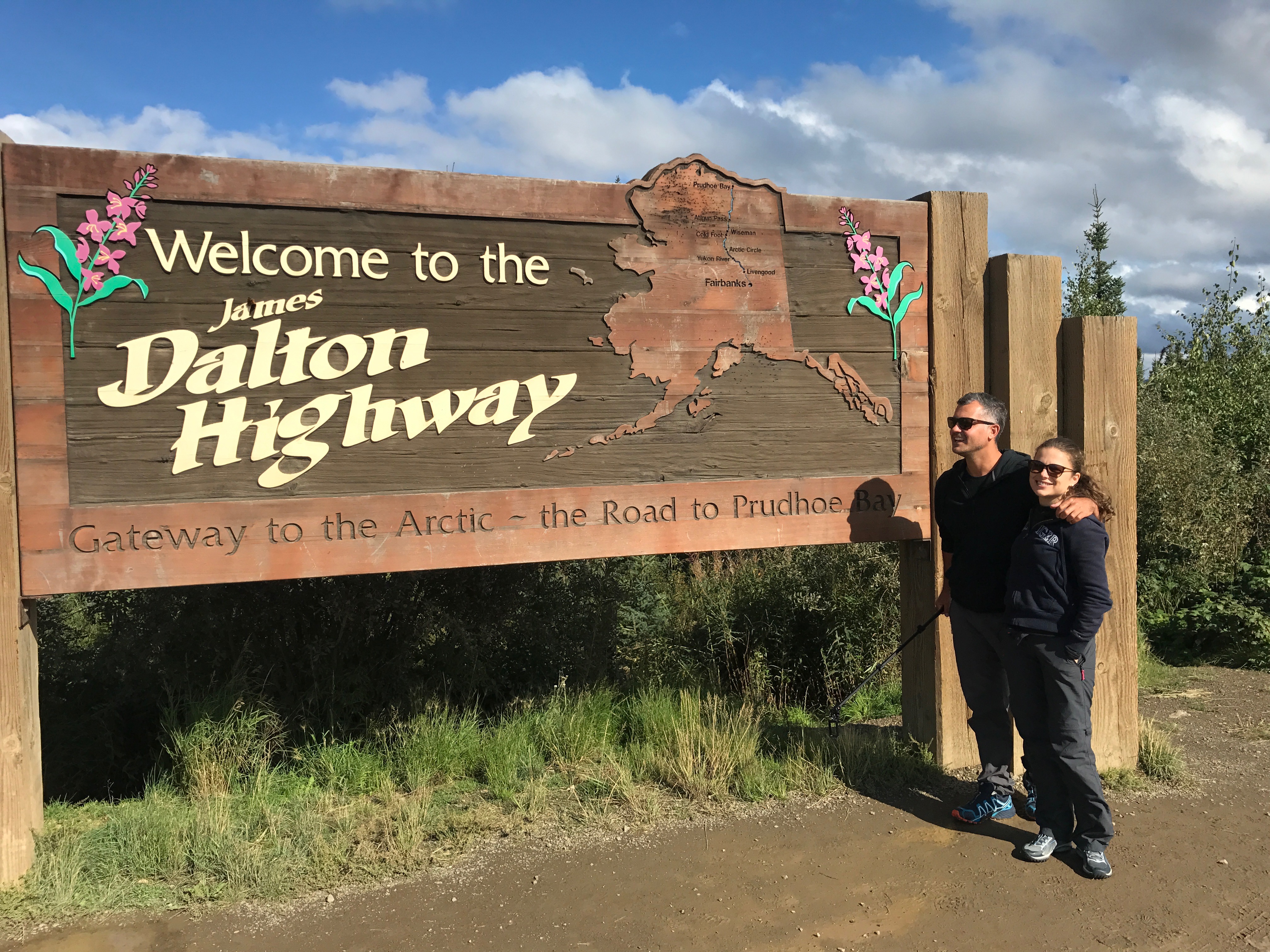
Before departing to Prudhoe Bay, we visited the Muskox Scientific Center at the University of Alaska, Fairbanks together with Lyn and Kurt. It was unique opportunity to learn about this rare animal that you can only find in the North Pole or above the Arctic Circle.
Muskox is an impressive wild bovine that have chunky curled horns, very thick layers of wool and looks quite stubborn and boxy. It is bigger and more aggressive than ship and has a smaller size than a bison or a bull, but similar expressions.
Muskox live mostly in very cold areas of the earth and they like to stay away from people. They were brought in Alaska from Greenland and Russia in order to repopulate the area since they suffered a decrease due to unregulated hunting. We understood they are protected animals now in Alaska and there are only 5 hunting permits given per year.
Muskox manage to survive in very severe environments because they can excavate very in-depth layers of snow, using their horns to reach the ground for plants that grow under the snow.
Their fur acts as a perfect insulation material and they barely feel cold, only slightly to their extremities. For muskox is more difficult to live in warmer weather than in extreme cold ones, like -40-50 degrees Celsius. Therefore you find these animals mostly around the North Pole and above the Arctic Circle.
When we visited the scientific center that studies the behavior of Muskox, we learnt that the center’s final aim is to learn if they can domesticate muskox for the use of fur, meat and milk. The student that made the tour and presentation explained that so far they are not economically profitable: their behavior is too stubborn and bossy, males fight all the time with other males for dominance, while the milk and fur they are producing is not compensating for the costs of maintenance, food and the constant behavior supervision needed.
Domestication happens in 3 generations time, so there is needed a time spam of 50 years for a proper study.
The population of muskox in Alaska reached now around 140,000.
After this experience we regrouped and headed all towards the Arctic Ocean via Dalton Highway.
We drove for five hours through forest landscapes until we started to see tundra vegetation, a sign we are getting closer to the Arctic Circle. The weather was changing every minute: cold and cloudy or sunny and warm. After half day drive we arrived at the imaginary Arctic Circle where there was a nice camping ground to rest. It started to rain as soon as we arrived. We were all tired and starving.
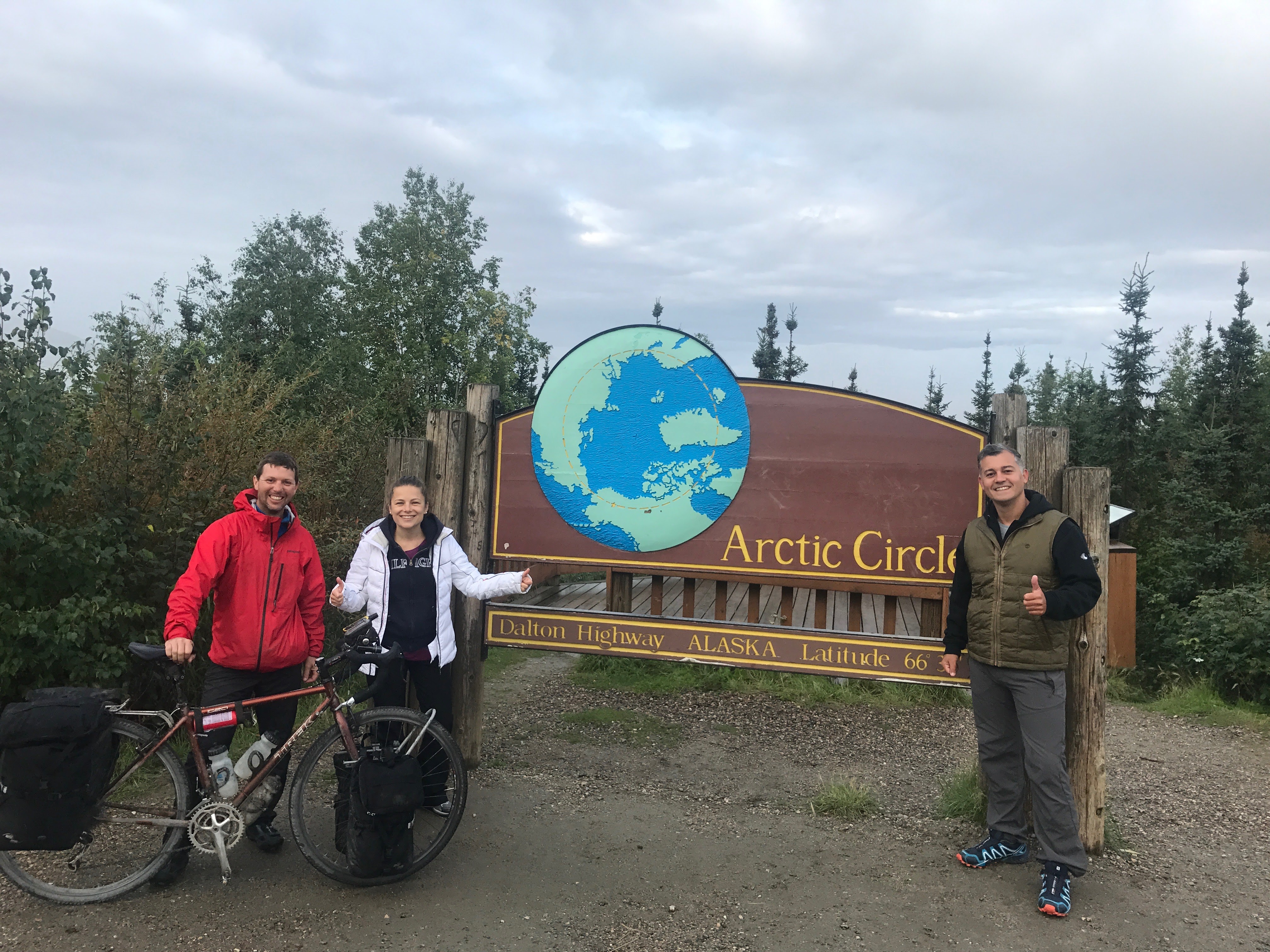
Out of nowhere there is a dude coming out of the bush with his bike. He came all the way from Deadhorse cycling his way to Fairbanks and his plan was to reach south California by November.
It was quite impressive to see because of the long distance needed to be covered and the capricious weather. I could only think at the conformable and cosy cabin we had to rest and I couldn’t imagine how is he going to organize his tent and camp in the middle of the rain and cold.
So we invited Chris over for dinner. We wanted to learn more about his experience, what is he doing, why is he doing this and how does he manage it.
We learnt that Chris is a professional athlete that is traveling for the past 10 years with the scope of promoting heart causes and to inspire children to practice sports. He is sponsored by various organizations that support heart and by Rotary Club. He also gets sponsorships from companies that manufacture equipment for cycling, clothing, hiking and camping. He stops in various towns along his route and speaks to children in school about his expeditions and teaches them about cycling, camping, and the importance of being active. In the past 10 years he achieved various travel missions, from reaching the highest mountain peaks in Africa, South America to cycling from Djibouti to Mozambique.
Although Chris just arrived after a long day of cycling in rain and cold, he greeted us with a big happy smile on his face. And that was inspiring to see.
We had dinner with Chris and learnt a lot about his travels and adventures across the world, being inspired by his determination and drive to impact in a positive way his community. Very soon our other friends Lyn and Curt arrived too, while Jane and Tonino brought a fruit salad for desert. We were 7 people in our truck, a record so far in our 8 square meter space. We had great chats, drinks and laughs in our tiny cabin. It was one of those spontaneous, random and incredible encounters with fellow travelers that are now your closest people on a lifetime adventure.
The next day from a group of seven we were four. Chris continued his road towards Fairbanks, Lyn and Kurt decided to return as well, while we and the Brazilian couple proceeded until the end of Dalton Highway, Deadhorse, Prudhoe Bay, Alaska.
The second part of the road from Coltfoot to Prudhoe Bay was much more beautiful than the first part.
As soon as we left Coldfoot we faced a beautiful arctic landscape and out of nowhere majestic rocky mountains covered with snow. Some of the most beautiful views we have ever seen. The road kept surprising us with its openness, inviting landscapes, small rivers and springs, colored tundra and mountains powdered with snow. What was really special was the solitude and the fact you are one of the few people in this huge territory. A feeling I never had.
Complete wonder, peace and relaxation.
Until one moment: Toninho with Jane were not seen in the distance and there were no signs they were approaching.
We decided to return and we found them on the side road with the motorhome broken. For some reason the engine didn’t have any power left to climb the last hills of the road. The road in some areas got hilly and bumpy and it was not an easy drive, especially when you don’t have a 4x4.
The guys tried to look at it and figure out what was the matter. Unfortunately no-one could understand and troubleshoot the issue and how they can solve it.
We decided to continue driving to Deadhorse, in order to ask for help while they would wait there for help. There was no network, no internet connection, no communication system. Not a situation you want to be in. It was scary.
Continuing driving towards Deadhorse was very pleasant unveiling the vast tundra with the river crossing on the right side. The sun was coming down the valley reflecting its light throughout the horizons. It was so remote, wild, untouched and we felt very special to be one of the few people around. Peaceful.
The only people you could see on the road were either workers for the Trans-Alaska pipeline, truck drivers or hunters in the search for caribou. For us it was sad to see the hunters waiting for their pray on the side road but for them I believe it’s part of the culture and it’s one of those outdoor activities they are used to do for generations. What was special to see, were two small herds of muskox in the horizon. We saw the wild muskox we learnt about at the scientific center. It was a unique feeling.
We finally arrived in Deadhorse, Prudhoe Bay after almost 10hrs drive that day. It was about 9pm and we were heading to the camp to search for help.
We were guided to the only police officer in town, a person that could give us more advise about who can we contact here for mechanical problems. He was very nice and helpful, gave us some directions about which companies we could potentially reach the following day. He even offered us a place to park and sleep over night.
We left the office about 10pm and decided to camp by the side of the lake where we saw the herd of muskox, hoping we will see them again.
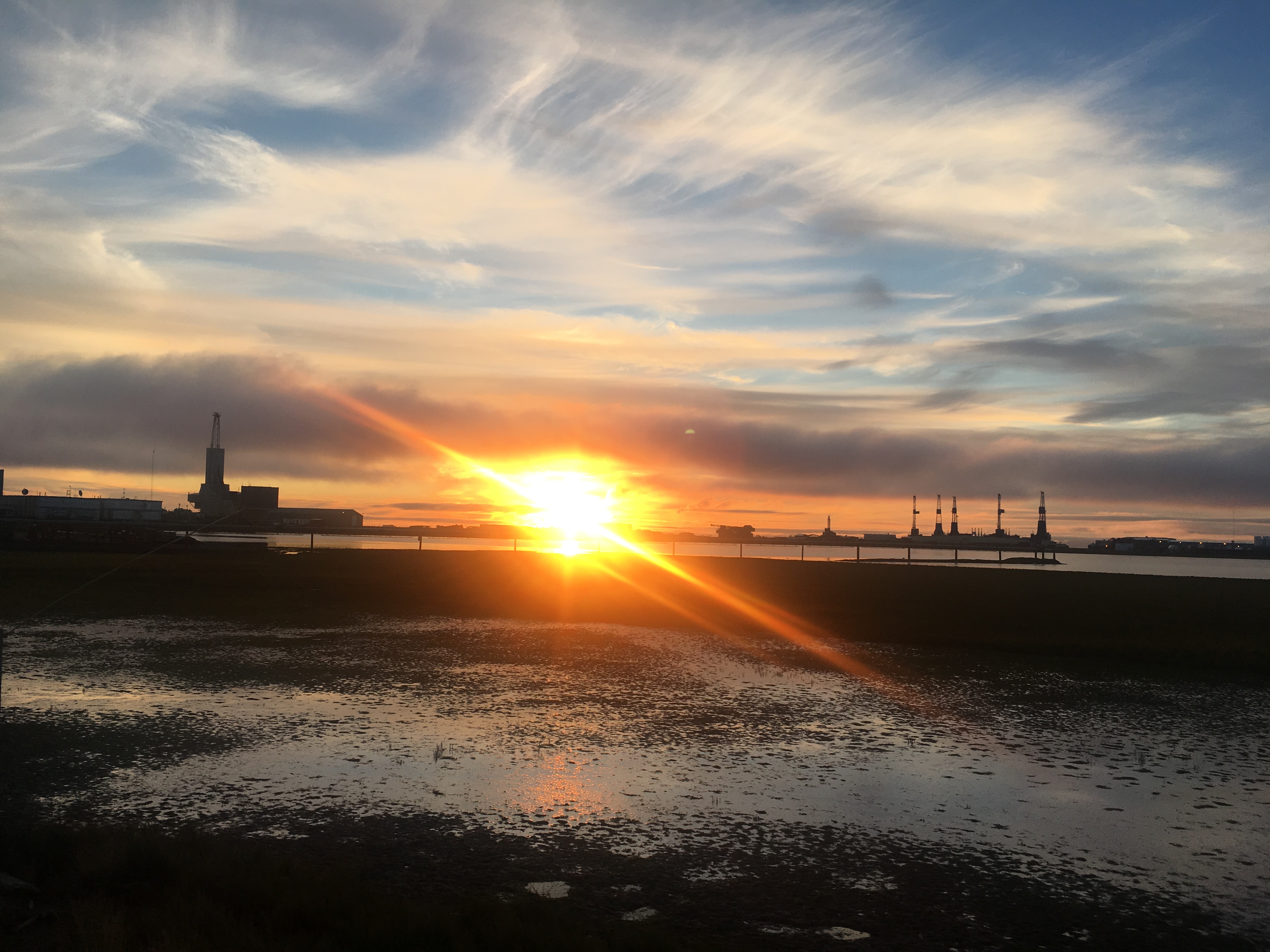
The next morning we departed about 6:30am to search for mechanics throughout the camp. The bad news was that you could find only companies and workers there, no residents since Deadhorse is not a town, it’s a camp for oil workers of North Slope Borough fields. Therefore we made sure we got the best price from the companies we visited and asked for various quotations for toeing and troubleshooting.
JP did the whole talking and negotiating. Eventually after various research he found a shop that seemed to offer the best cost benefit. Since it was quite expensive even in this shop we couldn’t commit for the job ourselves, Toninho and Jade had to take this decision.
Therefore JP drove all the way down 130km where the RV broke to tell them their options, the cost and to understand their final decision and see how we can further help. There was no network or internet coverage in the area they broke. They decided to be toed up to Deadhorse and get their car fixed at one of the shops.
JP toed them for 50km until they found Pump Station 2 of the Trans Alaskan pipeline where they could make the call to the company.
In the meantime I spent a great day at SA 10 Camp in Deadhorse, a service facility run by Ice Services company for the oil workers of North Slope Borough.
I arrived there early morning and talked with the manager, Tim. Tim was very nice, welcomed me for breakfast and to stay there until JP would be back.
I had a great coffee, a soup and a delicious cookie. I spent all morning talking with my mother, checking the news, updated the expedition on Facebook. It was really fun. People from the camp and the oil workers would come to eat lunch and I made friends.
They were very curious why I was there and what is my story. When I told them where I am from and that we drove all the way from Romania to get there, they were very impressed. One of the ladies, Cricket was really very nice and showed me around, where is the general store, the post office and presented me the camp. At the end of the tour she even gave us anniversary T-shirts with Prudhoe Bay and SA-10. I encountered a positive overwhelming hospitality of the oil workers from Prudhoe Bay oilfields.
It was already 5pm and JP didn’t arrive yet.
I started to create all sorts of scenarios in my mind: he must have got into trouble, our car broke, maybe they are trying to fix the RV on the road or maybe he is already here in a workshop trying to fix the RV.
Soon after I talked to the police officer about JP's delay, he appeared. Yuuhhuu! What a relief!!!
He returned from the rescue operation exhausted but very excited he could help.
We had the best Mexican food at SA-10 Camp’s restaurant: excellent guacamole, awesome minced spiced meat, nachos, tacos, salads, deserts, ice-cream, everything that you can eat. All thanks to the generosity and good will of Tim from SA- 10 Camp. When you do good things you are always rewarded back one way or another 🙂
The next morning, we woke up to catch the morning shuttle for the much desired trip to the Arctic Ocean. You can only get to the Arctic Ocean with a shuttle bus organized by a tourism agency, which costs 69$ and you need to book it at least one day in advance. Since the land is licensed to the oil companies you need to get clearance from the companies that operate there. It was really tough to wake up. I remember my eyes were swollen and JP was still very tired after yesterday’s marathon. Outside it was raining, foggy and misty, not very inviting to go out.
We put ourselves together, we went to Deadhorse Camp and took the shuttle.
What was more impressive and a learning experience was seeing the oil camp than the Arctic Ocean, which didn’t look any special than any other sea we’ve seen before, it was just colder. However it was still very cool to think you reached the Arctic Ocean over landing. A big milestone achieved. We were very happy.
We understood that there are about 500,000 barrels of oil per day produced in total from the North Slope Borough fields by four major operators: BP, ConnocoPhilips, Exxon and ENI. The guide showed us the facilities, the rigs that were on stand by, the pipelines that would carry the oil, gas and water, the gas separation plant, the gas injection plant, the wells. It was very insightful and exciting for me to see considering that I spent six years coordinating oil and gas investment guides in various producing countries.
What I saw there was serious business, serious equipment, machineries, accommodation rigs happy employees motivated by their generous wages and their two weeks rotation schedule. Everything amounted to a proper base for oil and gas operations, a type I haven’t seen before in other camps I visited in Africa and Middle East.
I really enjoyed learning from this experience.
After 20 miles through the oil camp we arrived to the Arctic Ocean. JP came all prepared. He took his flip-flops and got into the freezing Arctic Ocean. That was his thing. He really wanted to touch the Arctic with his feet. I was happy to touch it with my finger tips and film JP instead. The experience was really cold, windy, rainy, but quite extraordinary.
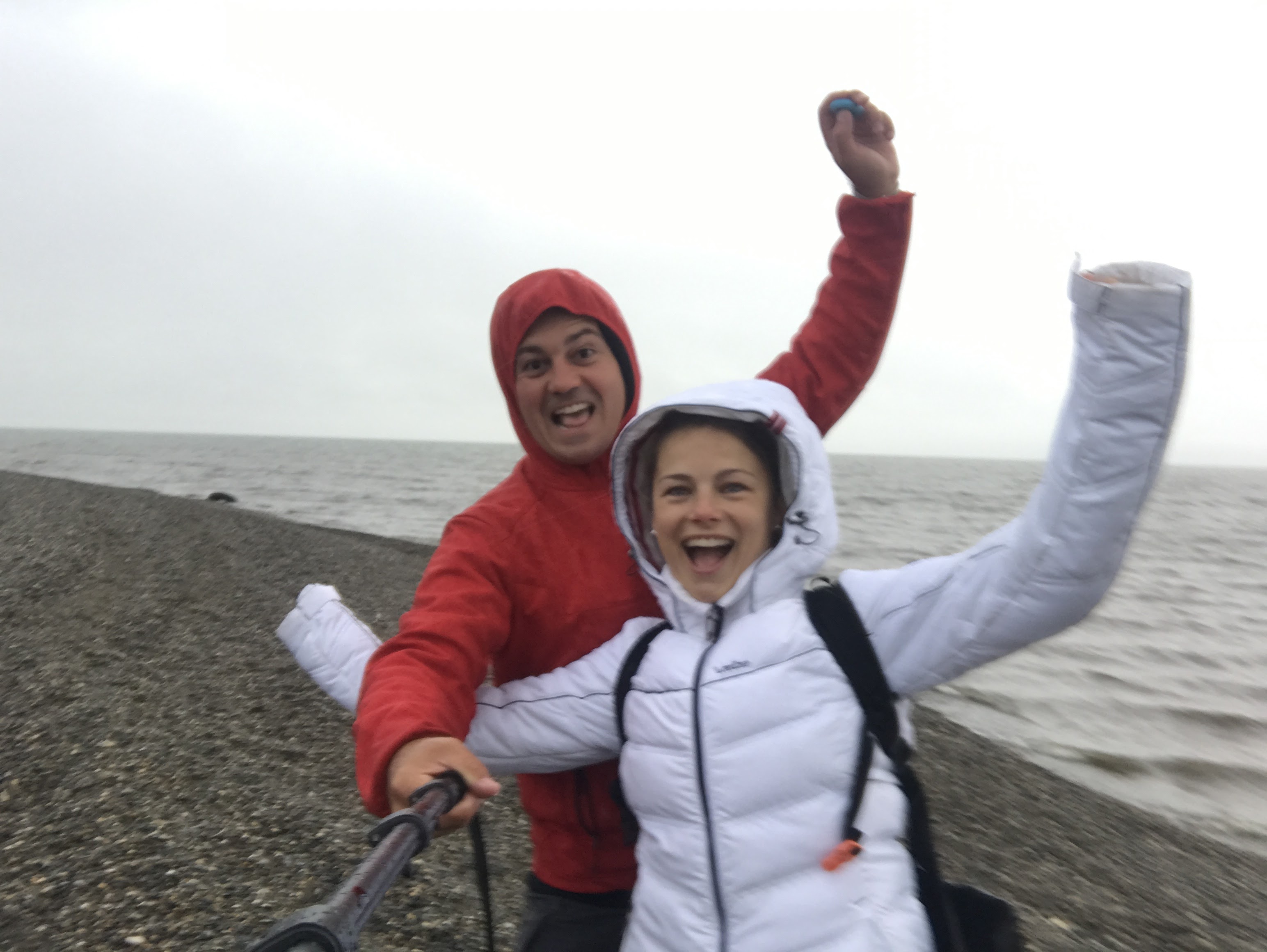
On the way back we were told stories about the bears and the oil workers. We understood that there are various grizzly bears visiting them in Prudhoe Bay. The bears became very shrewd about food. Once one bear was waiting for the workers that would carry their meal from lunch and would chase them to drop the take away food. That was really funny to hear. Imagine being that guy. Another time one bear got into an accommodation camp to the second floor of the building and a worker was in the situation of holding his bedroom door against the bear so the bear won’t enter the room. That must have been scary! They had to lay down the bear unfortunately.
The same story happened to a mama bear that learnt how to open the door of the camp and entered the building to get food. She had to be put down too. The cub bears were taken to the zoo. That’s what happens when bears become too accustomed with men and the food they know they can get. That’s why when you camp in Alaska or Canada, the tourism authorities always teach you that in the areas with bears, you are never allowed to feed them or to leave your food outside during the night.
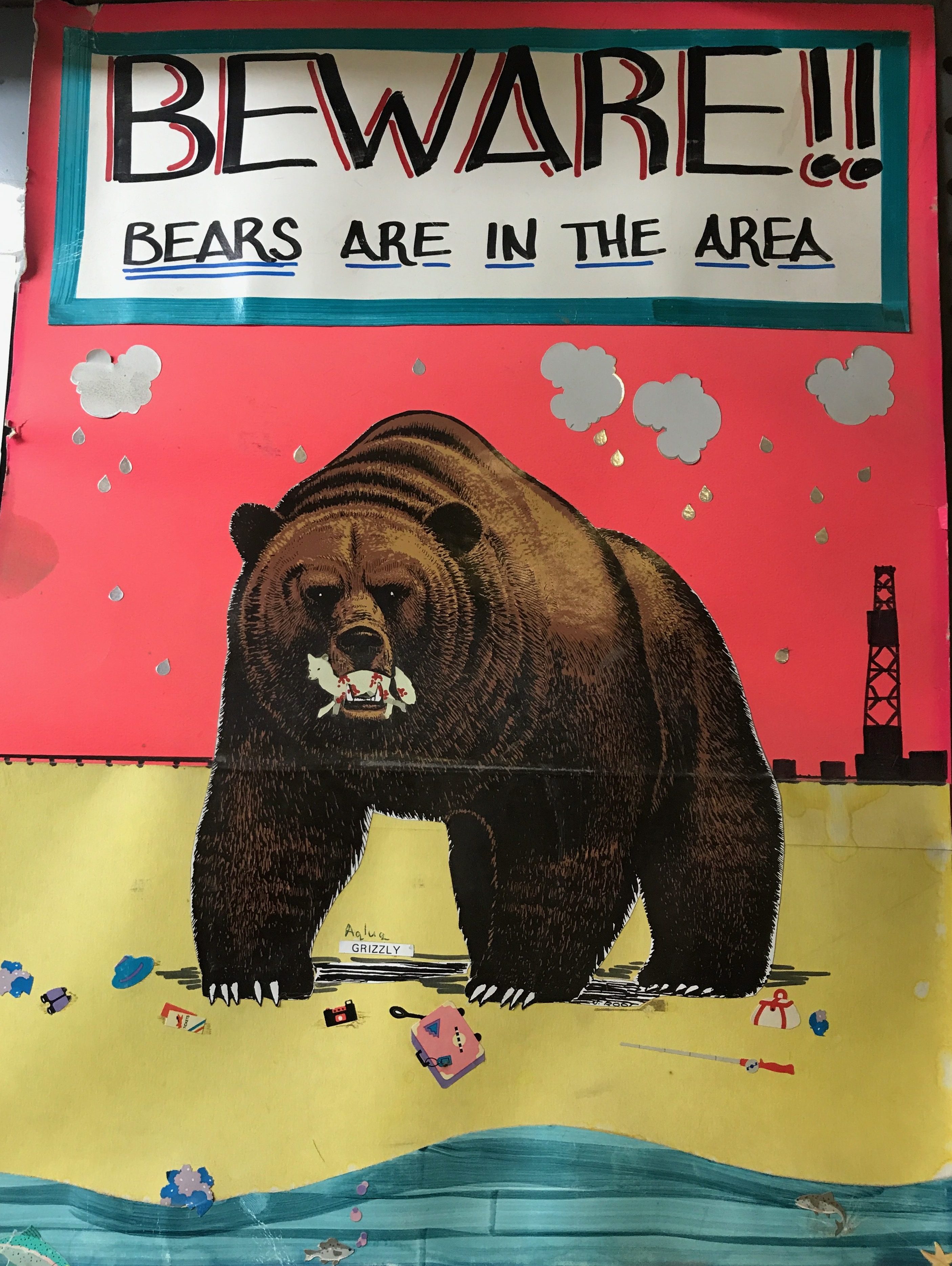
This was our last day in Prudhoe Bay. Before we departed back to Fairbanks we went to check on our friends at the shop where they would fix their camper van. In the end it cost them about 2000 euro for being toed and for the repairs. One man hour in Prudhoe Bay is 140$. You definitely don’t want your car broken here, that’s why I recommend a 4x4 for Dalton Highway.
Well, what does an adventurous traveler not do to achieve its dream to reach the northeast part of Alaska. This shows the risks, costs and implications such adventure can have.
We spent three days on our way back to Fairbanks and drove very careful, a bit more cautious after seeing what can happen. We took the opportunity to cook and enjoy the camping days into the wild.
On our way back the landscape already changed. In only few days you could see yellow, orange and reddish tundra which in contrast with the mountains offered us a stunning perspective of the valley and its transforming nature.
I found myself staring at the endless road, being caught by its beauty and searching for its wild animals. I was dreaming with open eyes.
We passed Coldfoot and since we needed to stop to go to the restroom, guess whom we met at the service area? Stan! Stan is a maintenance mechanic employee of the Bureau of Land Management which we briefly met on our way to Deadhorse. Coincidently we met him again on our way back. Stan's job is to make sure the service stops on the road are well maintained, supplied and often he does rescues too. But what you don’t know is that he served for the US Army for 20 years, amongst his missions he had been 2 years in Iraq, serving as a snipper.
If before I would know about snipers and war stories from movies, now we met the people that lived these stories. After a while spent in Alaska and US it became common to meet former military people, all of them with interesting stories to tell about their service in the navy or army.
Stan is a very friendly and social person. He has a lovely smile, but behind this smile he hides a traumatic past which he is curing now with the help of his US Army German shepherd that has been with him since Iraq war. He confessed that the dog saved his life twice and this time from himself. He tried to take his life twice having flashbacks and nightmares about the war and Duke, the German Shepard jumped on him with two occasions and didn’t allow him to do so. Must be a dreadful weight on his shoulders of what he had seen and done in the war. But now he looked happy to patrol the Dalton Highway road, rescuing people, giving road side assistance and as he confessed he is getting married again, which was a wonderful thing.
It was the first time when I really got the chance to talk with a former soldier that served the war, to understand the trauma that these events leave in people’s lives and what does a person like Stan feels after they participate in wars. It was touching and it was clear that war is not good for anybody, excepting the superpower groups with their own economic interests.
It was a Friday when we finally arrived back to Fairbanks.
We felt released, we survived the Dalton Highway. We were so happy to get to our final destination after 1600 km Fairbanks - Deadhorse - Fairbanks, no internet, no network, no signal, no service stations on the road, no government coverage.
As soon as we arrived we took the truck for washing. We spent about two hours to clean it, the truck was completely inundated by mud on the outside. After intense work I was dizzy and drained. We pursued to the next stop, the laundromat. By 7:30pm we were done with laundry and went for groceries, drinks, fuel and water.
It was almost 10pm when we arrived in the parking lot of the University of Alaska, Fairbanks to finally rest.
It has been a long day and a lifetime adventure to reach Prudhoe Bay, our first leg of our expedition in Alaska. We were very happy to manage this challenging experience, but in the same time extremely beautiful and a learning lesson. We were tired, but satisfied we made it.
